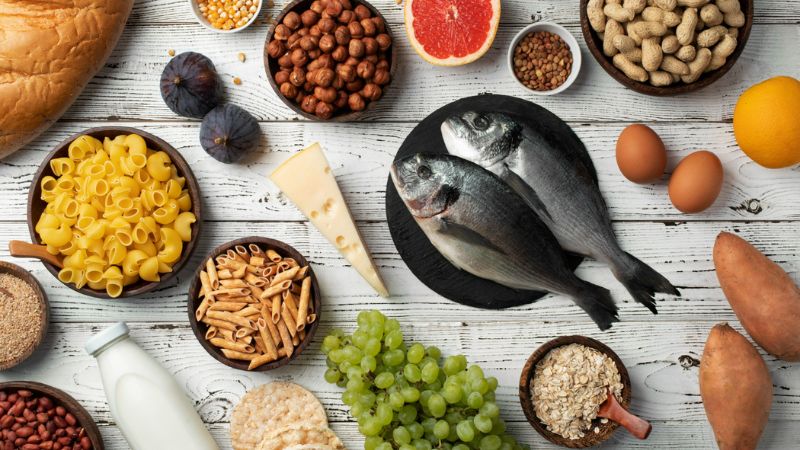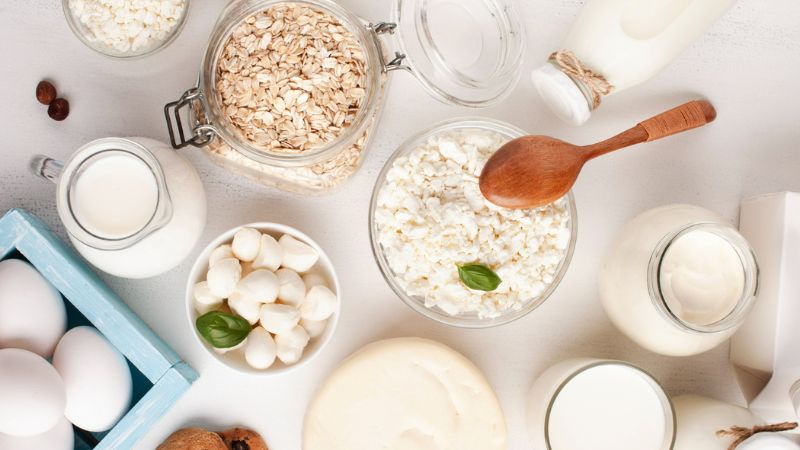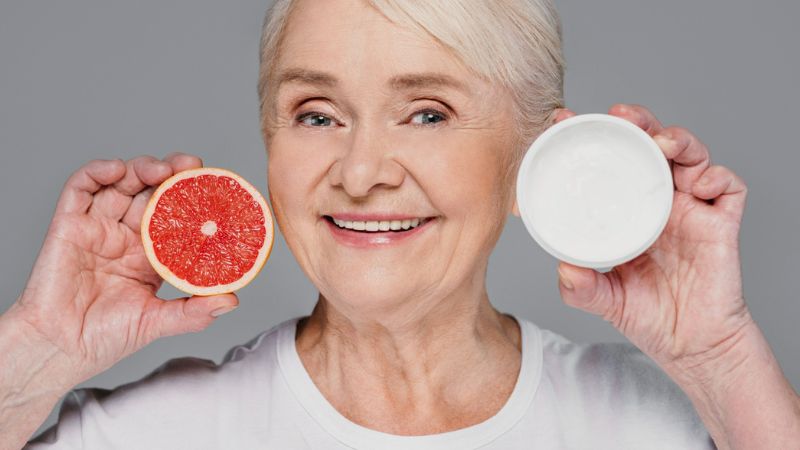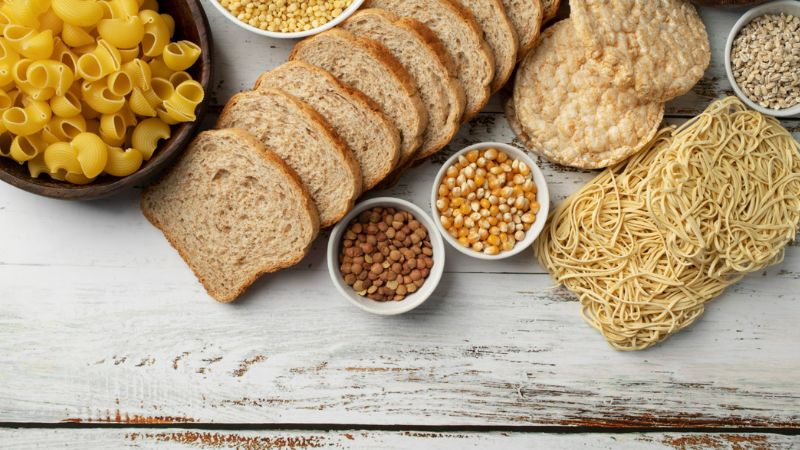Nutrition and Diet
A Guide to Heart-Healthy Eating for Seniors at Home

Eating well is vital at any age, but for seniors, choosing heart-healthy foods is especially important. As we age, our bodies change, and so do our nutritional needs. Heart disease remains a leading health concern, but with the right diet, its risks can be significantly reduced. This guide provides practical advice for seniors and their caregivers on how to make heart-smart choices that are both nutritious and delicious.
Understanding Heart-Healthy Eating
Heart-healthy eating involves consuming foods that support the health of your cardiovascular system while avoiding those that can increase heart disease risk. This dietary approach can help manage blood pressure, cholesterol levels, and body weight. Let’s break down the essentials of a heart-healthy diet:
Focus on Fruits and Vegetables
Fruits and vegetables are foundational to a heart-healthy diet. They are rich in vitamins, minerals, and fiber, but low in calories. Aim for a variety of colors on your plate — greens, reds, yellows, and purples. Each color represents different nutrients that help protect your heart and keep your body functioning optimally.
Choose Whole Grains
Whole grains are a great source of fiber, which can help to lower cholesterol and prevent cardiovascular disease. Swap out white bread and pasta for whole-grain versions like whole wheat bread, brown rice, and quinoa. These grains provide the energy seniors need without the negative effects on heart health that refined grains can have.
Select Lean Proteins
Protein is crucial for maintaining muscle mass, especially for seniors. Opt for lean protein sources that are low in saturated fat. Great choices include fish rich in omega-3 fatty acids (like salmon and trout), skinless poultry, beans, and legumes. These proteins support heart health by lowering blood pressure and reducing the risk of stroke.
Limit Unhealthy Fats
Not all fats are bad, but it’s important to limit the intake of saturated and trans fats. These fats can raise bad cholesterol levels and increase the risk of heart disease. Instead, use healthy fats found in olive oil, avocados, and nuts. These fats provide essential fatty acids and help to keep your cardiovascular system healthy.
Reduce Sodium Intake
High sodium intake is linked with high blood pressure, a major risk factor for heart disease. Seniors should aim to reduce their salt intake. Instead of seasoning with salt, use a variety of herbs and spices to add flavor to dishes. Also, be cautious with processed foods, which often contain high sodium levels.
Stay Hydrated
Hydration is crucial for maintaining heart health. Dehydration can lead to various heart-related issues, including increased heart rate and potential strain on the heart. Seniors should make sure to drink plenty of fluids throughout the day, prioritizing water over sugary or caffeinated beverages.
Practical Tips for Implementing a Heart-Healthy Diet
Plan Meals: Planning meals can help ensure that you include a variety of heart-healthy foods in your diet. It also makes grocery shopping easier and can reduce the impulse to buy unhealthy foods.
Cook at Home: Cooking at home allows you to control the ingredients and cooking methods. Use cooking techniques that require less fat, such as baking, broiling, grilling, or steaming.
Read Food Labels: Understanding food labels can help you make healthier choices by avoiding foods high in saturated fats, trans fats, cholesterol, and sodium.
Serve Smaller Portions: Eating smaller portions can help maintain a healthy weight, a key factor in cardiovascular health.
Seek Professional Advice: If you have specific health conditions or dietary needs, consult a healthcare provider or a dietitian who can help tailor your diet to benefit your heart.
Adopting a heart-healthy diet is a powerful step toward maintaining your overall health and well-being as you age. By focusing on nutritious foods and proper hydration, and by managing portion sizes and meal planning, seniors can significantly improve their cardiovascular health. Remember, it’s never too late to start eating well and taking care of your heart.
Balancing Diabetes Management with Home-Cooked Meals: Tips for Caregivers

For caregivers of individuals with diabetes, managing dietary needs can be a key part of maintaining the overall health and wellness of their loved ones. Home-cooked meals play a crucial role in controlling blood sugar levels, which is vital for the prevention of diabetes-related complications. This article offers practical advice on how to create balanced, nutritious meals that support diabetes management.
Understanding the Importance of Diet in Diabetes Control
Diet is a fundamental component in the management of diabetes. It directly affects blood glucose levels, and thus, needs careful consideration and planning. A balanced diet helps in maintaining a healthy weight, reducing cholesterol, and regulating blood pressure, all of which can complicate diabetes if not managed properly.
Carbohydrates and Blood Sugar
Carbohydrates have a significant impact on blood sugar levels. Caregivers need to understand which types of carbohydrates are better choices. Complex carbohydrates, such as whole grains, legumes, and vegetables, should be preferred over simple sugars because they provide a steady release of energy without spiking blood sugar levels.
The Role of Fiber
Fiber is crucial in a diabetic diet as it slows the absorption of sugar, helping to control blood sugar spikes. Incorporating a good amount of dietary fiber from fruits, vegetables, and whole grains can support digestive health and cardiovascular health.
Tips for Creating Diabetes-Friendly Home-Cooked Meals
Here are some strategies to help caregivers prepare meals that are both nutritious and supportive of diabetes management:
Plan Your Meals
Meal planning is a lifesaver when it comes to managing diabetes. It helps in maintaining a routine, which is important for blood sugar control. Plan meals that balance proteins, carbohydrates, and fats to ensure overall nutritional intake while keeping an eye on glycemic load.
Choose Healthy Cooking Methods
Opt for cooking methods that require less fat and maintain the nutritional integrity of foods. Grilling, baking, steaming, and stir-frying are great choices. These methods help preserve the flavor and nutrients of the ingredients without adding unnecessary fats.
Monitor Portion Sizes
It’s crucial to control portion sizes to manage calorie intake and prevent blood sugar fluctuations. Using smaller plates, checking serving sizes on food labels, and consulting dietary guidelines can help in serving just the right amount needed.
Incorporate Variety
Variety not only keeps meals interesting but also ensures a balanced intake of different nutrients. Rotate between different proteins (like fish, lean meats, and plant-based proteins), include a wide array of vegetables, and choose whole grains over processed ones.
Cut Down on Sugar and Salt
Reduce the amount of added sugars and salt in home-cooked meals to help prevent spikes in blood sugar and high blood pressure. Enhance flavor with herbs, spices, and healthy fats like olive oil instead.
Stay Hydrated
Proper hydration is important in managing diabetes. Water helps in the metabolism of food and can aid in the regulation of blood sugar levels. Ensure your loved one drinks ample water throughout the day.
Preparing home-cooked meals for someone with diabetes does not have to be a daunting task. By understanding the basics of diabetes-friendly nutrition and incorporating these tips, caregivers can significantly improve the ease and effectiveness of managing diabetes at home.
Remember, each individual’s needs can vary, so it’s important to tailor dietary choices to their specific health requirements. Consulting with a healthcare professional or a registered dietitian can provide further personalized guidance. With the right approach, you can help manage diabetes effectively through thoughtful, nutritious meals.
Nutritional Needs for Elderly Patients: Understanding the Basics

As we age, our bodies undergo various changes, which can affect our nutritional requirements. Elderly patients often face unique health challenges, including a decline in appetite, changes in taste preferences, and increased susceptibility to chronic diseases. Understanding the basics of nutrition for the elderly is essential for maintaining their health, strength, and quality of life. This article provides a straightforward guide to the fundamental nutritional needs of elderly patients.
The Importance of Nutrition in Elderly Care
Proper nutrition is crucial for the elderly, as it helps in managing health conditions, preventing infections, and ensuring overall well-being. Nutrient-dense foods can enhance muscle strength and mobility, decrease the risk of chronic diseases like osteoporosis and heart disease, and aid in better management of metabolic disturbances like diabetes.
Key Nutrients for Elderly Patients:
Protein
Protein is vital for preserving muscle mass, repairing tissues, and supporting immune function. As muscle mass decreases with age, protein intake becomes even more important. Sources of high-quality protein include lean meats, fish, eggs, dairy products, and plant-based options like beans and lentils.
Calcium and Vitamin D
Calcium and vitamin D are essential for bone health, especially important to combat the risks of osteoporosis prevalent among the elderly. Dairy products, fortified foods, leafy greens, and adequate sunlight exposure can help meet these nutritional needs.
Fiber
Fiber aids in digestion and prevents constipation, a common issue in older adults. It can also help manage blood sugar levels and reduce the risk of heart disease. High-fiber foods include whole grains, vegetables, fruits, and legumes.
Healthy Fats
Healthy fats are crucial for brain health and energy. Sources of good fats include olive oil, avocados, nuts, and fatty fish, which provide omega-3 fatty acids beneficial for heart and brain function.
Common Nutritional Challenges for the Elderly
Understanding the obstacles to proper nutrition can help caregivers and family members devise effective strategies to address them:
Decreased Appetite
Many elderly individuals experience a reduction in appetite, which can lead to inadequate nutrient intake. Serving small, nutrient-dense meals throughout the day rather than three large meals can help ensure they receive the nutrition they need.
Difficulty Chewing or Swallowing
Dental issues or decreased saliva production can make it tough for the elderly to chew or swallow. Providing softer foods and ensuring any dentures fit properly can alleviate these issues.
Altered Taste and Smell
A diminished sense of taste and smell is common with aging, which can decrease interest in food. Experimenting with spices and herbs can help enhance the flavor of meals, making them more appealing.
Medication Interactions
Some medications can affect appetite or interact with nutrients, impacting nutritional status. It’s important to discuss these potential interactions with a healthcare provider.
Practical Tips for Improving Nutrition in Elderly Patients
Encourage Regular, Balanced Meals: Aim for balanced meals that provide a mix of proteins, carbohydrates, and fats.
Focus on Nutrient Density: Choose foods that are high in nutrients compared to their calorie content to ensure a rich supply of vitamins and minerals.
Hydrate Often: Ensure the elderly are taking in enough fluids, as dehydration can be a serious issue among this age group.
Monitor Weight and Health: Keep track of weight and overall health. Sudden weight loss could be a sign of a nutritional deficiency or other health issues.
Meeting the nutritional needs of elderly patients is key to their health and well-being. By understanding these needs and addressing the common challenges that come with aging, caregivers can significantly improve the dietary quality of their elderly loved ones. Always consult with a healthcare provider or a nutritionist to tailor dietary approaches to individual needs, ensuring the best possible care and nutrition strategies are in place.
5 Easy and Nutritious Recipes for Elderly Patients with Chewing Difficulties

Elderly individuals often face various health challenges, and chewing difficulties are a common issue that can significantly impact nutrition and quality of life. Caregivers and family members need to provide meals that are not only easy to consume but also packed with nutrients necessary for health. This blog post shares five simple and nutritious recipes designed to cater to elderly patients with chewing difficulties, ensuring they enjoy their meals while receiving the nutrition they need.
Smooth Veggie and Protein Puree
Ingredients:
- 1 cup steamed carrots
- 1 cup cooked peas
- 1 small cooked sweet potato
- 1/2 cup cooked chicken breast
- Olive oil or butter for taste
- Salt and pepper to taste
Instructions:
- Combine the steamed carrots, cooked peas, sweet potato, and chicken breast in a blender or food processor.
- Add a tablespoon of olive oil or butter for added flavor and smoother texture.
- Blend until smooth. Season with salt and pepper.
- Serve warm, ensuring the puree is soft and easy to swallow.
This recipe provides a hearty dose of vegetables and protein, all in a form that is easy to consume without chewing.
Creamy Oatmeal with Mashed Bananas
Ingredients:
- 1/2 cup rolled oats
- 1 cup milk or almond milk
- 1 ripe banana
- Honey or maple syrup to taste
- Cinnamon (optional)
Instructions:
- Cook the rolled oats in milk over medium heat until the oats are soft and have absorbed most of the liquid.
- Mash the banana until smooth and stir into the cooked oatmeal.
- Add a drizzle of honey or maple syrup for sweetness and sprinkle some cinnamon for flavor.
- Serve warm, ensuring the oatmeal is creamy and easy to digest.
Oatmeal is excellent for elderly individuals as it is high in fiber, which helps with digestion, and soft enough for those with chewing difficulties.
Savory Lentil Soup
Ingredients:
- 1 cup red lentils
- 4 cups vegetable broth
- 1 diced onion
- 1 minced garlic clove
- 1 diced carrot
- 1 diced celery stalk
- Salt and pepper to taste
- Olive oil
Instructions:
- Heat olive oil in a pot over medium heat. Add the onion, garlic, carrot, and celery, and cook until softened.
- Add the red lentils and vegetable broth. Bring to a boil, then simmer until the lentils are very soft, about 20 minutes.
- Blend the soup with an immersion blender until smooth.
- Season with salt and pepper, and serve warm.
Lentil soup is not only filling but also provides plenty of proteins and nutrients, all in a smooth consistency that’s perfect for those with difficulty chewing.
Fluffy Scrambled Eggs with Cottage Cheese
Ingredients:
- 2 eggs
- 1/4 cup cottage cheese
- Butter or oil for cooking
- Salt and pepper to taste
Instructions:
- Whisk the eggs and cottage cheese together until well combined.
- Heat a non-stick skillet with a little butter or oil over medium heat.
- Pour in the egg mixture, stirring gently until the eggs are softly set.
- Season with salt and pepper, and serve warm.
Scrambled eggs with cottage cheese are a protein-rich meal that’s soft and easy to manage, ideal for those with chewing issues.
Baked Apple Pudding
Ingredients:
- 2 peeled and finely chopped apples
- 1/4 cup raisins
- 1/2 teaspoon cinnamon
- 2 tablespoons sugar
- 1/2 cup water
- 2 slices of bread (crusts removed and bread torn into small pieces)
Instructions:
- Preheat the oven to 350°F (175°C).
- In a baking dish, combine apples, raisins, cinnamon, sugar, and water.
- Add the torn bread pieces and stir to combine.
- Bake for 30 minutes or until the apples are completely soft.
- Mash or blend if needed to achieve a smooth consistency.
This baked apple pudding is not only a delightful dessert but also a soothing, easy-to-eat meal, providing hydration and nutrients from fresh fruits.
For elderly patients with chewing difficulties, maintaining a nutritious diet doesn’t have to be a struggle. These recipes ensure that meals are not only safe and comfortable to eat but also packed with essential nutrients to support their health and well-being. Always adjust the textures and consistencies to meet specific needs, and consult with a healthcare professional to ensure dietary requirements are met. Enjoy preparing these simple, nutritious meals that will bring both comfort and nourishment to your loved ones.
The Role of Hydration in Elderly Care: Simple Strategies for Caregivers

Hydration is a critical component of health at any age, but for the elderly, maintaining adequate fluid intake can be particularly challenging and yet vitally important. Elderly individuals are at a higher risk for dehydration due to various factors, including reduced kidney function, lessened thirst sensation, and the prevalence of chronic conditions that might require medication affecting hydration status.
Understanding the Importance of Hydration in Elderly Care
Hydration affects nearly every aspect of health, especially in elderly adults. Adequate fluid intake is essential for:
Regulating body temperature: Without enough fluids, there’s a risk of heat exhaustion or heatstroke, especially in hot weather.
Promoting cardiovascular health: Proper hydration helps maintain blood volume, allowing the heart to pump blood more efficiently.
Supporting kidney function: The kidneys rely on sufficient fluids to filter waste from the blood and excrete it in urine.
Enhancing cognitive function: Dehydration can lead to confusion, irritability, and more severe cognitive impairments.
Signs of Dehydration in the Elderly
Recognizing dehydration early can prevent many health complications. Some common signs include:
- Dry mouth and dry skin
- Infrequent urination or urine that is dark in color
- Fatigue or dizziness
- Chronic constipation
Simple Strategies for Ensuring Adequate Hydration
Caregivers can play a crucial role in managing hydration levels in elderly patients. Here are several straightforward strategies to promote regular fluid intake:
Establish a Drinking Schedule
Setting a routine can help ensure that elderly individuals consume fluids consistently throughout the day. Aim to provide a drink at every meal, between meals, and whenever medication is taken.
Serve a Variety of Fluids
Water is the best hydrator, but elderly individuals may prefer variety. Include other sources of fluids like:
- Herbal teas, are calming and can be served warm or cold.
- Flavored waters, either commercially available or homemade with slices of fruit.
- Soups and broths that are low in sodium but high in flavor.
Use Clear, Easy-to-Handle Cups and Glasses
Ensure that drinking vessels are easy to hold, lightweight, and appealing. Some seniors might find using a straw easier than tilting a glass, especially if they have mobility limitations.
Make Fluids Easily Accessible
Keep a fresh glass of water within easy reach of where your loved one spends most of their time, such as next to their favorite chair or on a bedside table. Consider portable hydration packs if mobility is limited.
Monitor Fluid Intake and Output
Keep track of how much your loved one drinks and how often they urinate. Changes in these patterns can provide early warning signs of dehydration or other health issues.
Enhance the Flavor Without Adding Sugar
Some elderly people might be put off by plain water; enhancing the taste naturally can help. Try adding cucumber, lemon, or mint to water. These add flavor without the unnecessary sugars found in many commercial beverages.
Encourage Foods with High Water Content
Fruits and vegetables like watermelon, strawberries, cucumber, and celery contribute to hydration due to their high water content. Incorporating these into the diet can help maintain fluid levels.
Be Aware of Medical Conditions and Medications
Some health conditions or medications can increase the risk of dehydration. Be sure to discuss these factors with a healthcare provider to understand how best to support hydration needs medically.
Hydration is a key factor in elderly health care, influencing various physical functions and overall well-being. By implementing these simple, effective strategies, caregivers can help ensure that their elderly loved ones remain hydrated and healthy. Always consult with healthcare professionals for personalized advice tailored to specific health conditions and needs. Staying proactive about hydration can vastly improve the quality of life for the elderly under your care.
The Importance of Fiber: Daily Recipes to Boost Digestion for Homebound Seniors

As we age, maintaining digestive health becomes increasingly vital, especially for homebound seniors. Incorporating fiber-rich foods into daily meals is key to supporting digestion and overall well-being. This collection of recipes is curated to offer delicious and nutritious options that are easy to prepare at home.
From hearty soups to flavorful salads and satisfying snacks, each dish is designed to boost fiber intake and promote digestive health. By embracing these recipes, seniors can enjoy a diverse range of flavors while prioritizing their digestive needs, enhancing their quality of life in the comfort of their homes.
Digestive Health
Fiber plays a crucial role in digestive health, especially for seniors prone to constipation. It adds bulk to stool, easing its passage through the digestive tract and promoting regular bowel movements. By absorbing water, fiber softens stool, reducing the likelihood of discomfort and straining during bowel movements.
Additionally, fiber-rich foods stimulate the natural contraction of the intestines, aiding in waste elimination. Consistent intake of fiber-rich foods like fruits, vegetables, whole grains, and legumes can alleviate constipation and promote overall digestive wellness in seniors, ensuring they maintain comfort and regularity in their bowel movements for optimal health.
Nutrient Absorption
Adequate fiber intake ensures optimal absorption of essential nutrients, supporting overall health. Fiber aids in regulating the digestive process, promoting a healthy balance of gut bacteria, and maintaining the integrity of the intestinal lining. By doing so, it enhances the efficiency of nutrient absorption, ensuring vitamins, minerals, and other vital nutrients are effectively assimilated by the body.
Furthermore, fiber helps to slow down the digestion of food, allowing for more thorough nutrient extraction in the small intestine. This ensures that the body can fully utilize the nutrients present in the diet, supporting various bodily functions and overall wellness.
Weight Management
Fiber-rich foods tend to have a lower energy density, meaning they provide fewer calories per gram compared to foods high in fats and sugars. By incorporating more fiber-rich foods into the diet, individuals can consume larger portions of food with fewer calories, facilitating weight management goals without sacrificing satiety or nutritional adequacy.
Additionally, the slow digestion and absorption of fiber contribute to stabilized blood sugar levels, preventing rapid spikes and crashes that can lead to cravings and overeating. This steady energy release from fiber-rich foods helps to maintain consistent energy levels throughout the day, reducing the likelihood of excessive snacking on high-calorie, low-nutrient foods.
Blood Sugar Control
Fiber slows down the absorption of sugar into the bloodstream, crucial for regulating blood sugar levels and mitigating the risk of diabetes. Soluble fiber forms a gel-like substance in the digestive tract, which delays the breakdown and absorption of carbohydrates, preventing rapid spikes in blood glucose after meals.
This slower absorption rate promotes more stable blood sugar levels over time, reducing the strain on the body’s insulin response mechanisms. By moderating blood sugar fluctuations, fiber-rich foods help lower the risk of developing type 2 diabetes and support overall metabolic health.
Heart Health
Soluble fiber plays a pivotal role in promoting heart health by actively lowering cholesterol levels, thus diminishing the risk of heart disease and stroke. When soluble fiber dissolves in water, it forms a gel-like substance that binds to cholesterol in the digestive tract, preventing its absorption into the bloodstream.
Consequently, the body excretes cholesterol rather than allowing it to circulate and accumulate in the arteries. By reducing levels of LDL (bad) cholesterol, soluble fiber helps maintain arterial health and reduces the likelihood of plaque formation, ultimately safeguarding against cardiovascular ailments like heart disease and stroke.
Gut Microbiome
Fiber nourishes beneficial gut bacteria, supporting immune function and mental well-being. Fiber serves as a vital fuel for beneficial gut bacteria, fostering a healthy gut microbiome essential for immune function and mental well-being. When fiber reaches the colon undigested, it becomes a substrate for fermentation by gut bacteria, producing short-chain fatty acids (SCFAs) like butyrate. SCFAs play a crucial role in regulating immune responses, reducing inflammation, and enhancing the intestinal barrier’s integrity.
Moreover, the gut-brain axis links the gut microbiome to mental health, with SCFAs influencing neurotransmitter production and mood regulation. Thus, fiber’s role in nourishing beneficial gut bacteria contributes to both physical resilience and psychological wellness.
Prevention of Chronic Diseases
A diet rich in fiber is instrumental in preventing chronic diseases by reducing the risk factors associated with conditions such as obesity, type 2 diabetes, cardiovascular diseases, and certain cancers. Fiber aids in weight management by promoting satiety and reducing calorie intake.
Additionally, soluble fiber helps regulate blood sugar levels and lower cholesterol, mitigating the risk of diabetes and heart disease. Furthermore, fiber-rich foods support digestive health and nurture a diverse gut microbiome, which is linked to immune function and reduced inflammation. Incorporating ample fiber into the diet is a cornerstone of preventive health measures against a spectrum of chronic diseases.
Incorporating fiber-rich recipes into daily meals is a simple yet effective way for homebound seniors to enhance their digestion and overall health. By prioritizing nutrient-dense foods like fruits, vegetables, whole grains, and legumes, seniors can enjoy a variety of delicious meals while reaping the benefits of improved digestion.
Whether it’s a nourishing bowl of oatmeal for breakfast, a colorful salad for lunch, or a comforting soup for dinner, each recipe offers a flavorful way to support digestive function and promote well-being. With these culinary choices, seniors can continue to thrive and maintain their independence while staying connected to the pleasures of good food within the comforts of home.
The Impact of Dietary Choices on Mobility and Joint Health in Seniors

Maintaining mobility and joint health is paramount for seniors to sustain an active lifestyle and independence. Dietary choices play a pivotal role in this regard, as they directly influence inflammation levels, bone density, and muscle strength. By understanding how certain foods can either support or hinder these aspects, seniors can make informed decisions to enhance their overall well-being.
This paper explores the intricate relationship between dietary choices and mobility/joint health in seniors, shedding light on key nutrients and dietary patterns that promote longevity and vitality in later years.
Nutrient Density
Seniors often have specific nutritional needs due to changes in metabolism and decreased absorption of nutrients. Consuming a diet rich in nutrient-dense foods such as fruits, vegetables, lean proteins, and whole grains can support overall health, including joint health. Nutrients like vitamin C, vitamin D, calcium, and omega-3 fatty acids have been linked to improved bone and joint health.
Hydration
Proper hydration is essential for maintaining joint health and mobility, as it helps keep the cartilage in joints lubricated and reduces friction during movement. Seniors should aim to drink an adequate amount of water throughout the day, as dehydration can worsen joint stiffness and discomfort.
Inflammatory Foods
Certain foods can promote inflammation in the body, exacerbating conditions like arthritis. Processed foods high in sugar, saturated fats, and refined carbohydrates are known to trigger inflammatory responses. Seniors should prioritize whole, unprocessed foods and incorporate anti-inflammatory foods such as fatty fish, nuts, seeds, and leafy greens into their diet to help reduce inflammation and alleviate joint pain.
Weight Management
Maintaining a healthy weight is crucial for preserving joint health and mobility, especially in seniors. Excess body weight puts added stress on the joints, leading to accelerated wear and tear and an increased risk of conditions like osteoarthritis. A balanced diet combined with regular physical activity can help seniors achieve and maintain a healthy weight, reducing the burden on their joints.
Protein Intake
Protein is essential for maintaining muscle mass and strength, which are critical for supporting joint function and mobility. Seniors should aim to include adequate protein sources such as lean meats, poultry, fish, eggs, dairy products, legumes, and tofu in their diet. Additionally, collagen, a protein found in connective tissues, may help support joint health and reduce the risk of conditions like osteoarthritis.
Antioxidants and Phytonutrients
Antioxidants and phytonutrients found in fruits and vegetables have been shown to have anti-inflammatory and protective effects on joint health. These compounds help neutralize free radicals and reduce oxidative stress, which can contribute to joint damage and inflammation.
Anti-inflammatory Foods
Chronic inflammation is associated with joint pain and mobility issues. Including anti-inflammatory foods in the diet can help reduce inflammation and alleviate joint discomfort. Foods rich in omega-3 fatty acids, such as fatty fish (salmon, mackerel), flaxseeds, and walnuts, possess anti-inflammatory properties. Additionally, fruits and vegetables high in antioxidants, such as berries, oranges, and spinach, can help combat inflammation.
Limiting Inflammatory Foods
Certain foods can promote inflammation in the body, exacerbating joint pain and mobility issues. These include processed foods high in refined sugars, saturated and trans fats, and excessive amounts of red meat. Seniors should aim to limit their intake of these inflammatory foods and opt for healthier alternatives.
Vitamin C
Vitamin C is essential for collagen synthesis and plays a role in maintaining the health of cartilage and connective tissues. Seniors should consume foods rich in vitamin C, such as citrus fruits, strawberries, bell peppers, and broccoli, to support joint health and mobility.
Spices and Herbs
Certain spices and herbs possess anti-inflammatory properties and can help alleviate joint pain and improve mobility. Turmeric, ginger, cinnamon, and garlic are examples of spices and herbs that have been studied for their potential benefits in reducing inflammation and easing joint discomfort. Seniors can incorporate these ingredients into their cooking to reap their health benefits.
Protein Intake
Protein is essential for maintaining muscle mass and strength, which are crucial for supporting joint function and mobility. Seniors should include adequate protein sources in their diet, such as lean meats, poultry, fish, legumes, and dairy products, to support overall musculoskeletal health.
Omega-3 Supplementation
In addition to consuming omega-3-rich foods, seniors may benefit from omega-3 supplementation, particularly if they do not regularly consume fish or flaxseeds. Omega-3 supplements have been shown to have anti-inflammatory effects and may help reduce joint pain and stiffness in seniors with arthritis.
Bone Health
Strong bones are essential for mobility and overall musculoskeletal health, especially as individuals age and bone density naturally decreases. Calcium and vitamin D are two key nutrients that play a crucial role in maintaining bone health. Seniors should include calcium-rich foods such as dairy products, leafy green vegetables, and fortified foods in their diet to support bone strength.
Furthermore, adequate vitamin D intake is necessary for calcium absorption and bone mineralization. Seniors can obtain vitamin D from sources like fatty fish, egg yolks, and fortified foods, or through sun exposure. Ensuring sufficient intake of these nutrients can help prevent osteoporosis and reduce the risk of fractures, thereby supporting mobility in seniors.
Joint Lubrication
Proper hydration is essential for maintaining joint health and mobility in seniors. Water acts as a lubricant for joints, facilitating smooth movement and reducing friction between bones. Dehydration can lead to joint stiffness and discomfort, impairing mobility and increasing the risk of falls and injuries.
Seniors should aim to drink an adequate amount of water throughout the day, and they can also incorporate hydrating foods such as fruits and vegetables into their diet. Additionally, certain beverages like green tea contain antioxidants and anti-inflammatory compounds that may further support joint health in seniors.
The significance of dietary choices in preserving mobility and joint health among seniors cannot be overstated. Adopting a balanced diet rich in anti-inflammatory foods, calcium, vitamin D, and protein can mitigate the risk of conditions like osteoarthritis and osteoporosis, thus improving overall quality of life.
Additionally, maintaining a healthy weight through proper nutrition contributes to reduced strain on joints and enhanced mobility. As such, promoting awareness and education about the importance of dietary habits among seniors is crucial for fostering healthy aging and preserving independence in the later stages of life.
Omega-3 Fatty Acids: Why They’re Essential for Elderly Health

Omega-3 fatty acids play a crucial role in maintaining optimal health, particularly for the elderly. As individuals age, the importance of these essential nutrients becomes increasingly apparent, as they are linked to improved cognitive function, heart health, and joint mobility.
In this article, we explore why omega-3 fatty acids are essential for elderly health and provide practical tips on how to incorporate them into daily meals. By understanding the significance of omega-3s and implementing simple dietary changes, seniors can enhance their overall well-being and enjoy a better quality of life in their golden years.
Cardiovascular Health
Omega-3 fatty acids, particularly eicosapentaenoic acid (EPA) and docosahexaenoic acid (DHA) found in fatty fish like salmon, trout, and mackerel, have been extensively studied for their cardiovascular benefits. Research suggests that omega-3s can help reduce triglyceride levels, lower blood pressure, and prevent the formation of blood clots, thus lowering the risk of heart disease and stroke in seniors. Additionally, omega-3s may help improve endothelial function, reduce inflammation, and stabilize plaque in the arteries, further supporting heart health in the elderly.
Cognitive Function
Maintaining cognitive function is a top priority for many seniors, and omega-3 fatty acids have been shown to play a role in brain health. DHA, in particular, is a major component of brain cell membranes and is essential for proper brain function. Studies have linked higher omega-3 intake to a reduced risk of cognitive decline, dementia, and Alzheimer’s disease in older adults. Including omega-3-rich foods in the diet, such as fish, walnuts, and flaxseeds, may help support cognitive function and memory retention in the elderly.
Joint Health
Joint pain and inflammation are common concerns among seniors, but omega-3 fatty acids may offer some relief. EPA and DHA have anti-inflammatory properties that can help reduce joint stiffness and discomfort associated with conditions like osteoarthritis and rheumatoid arthritis. Incorporating fatty fish or fish oil supplements into the diet may help alleviate joint pain and improve mobility in elderly individuals.
Eye Health
Omega-3 fatty acids are also beneficial for maintaining eye health, particularly as individuals age. DHA is a major structural component of the retina, and adequate intake of omega-3s has been associated with a reduced risk of age-related macular degeneration (AMD) and dry eye syndrome.
Brain Function
DHA, one of the main omega-3 fatty acids found in the brain, is essential for cognitive function and neurological health. Adequate intake of omega-3 fatty acids has been associated with a lower risk of cognitive decline, dementia, and Alzheimer’s disease in seniors. Including omega-3-rich foods in the diet can help support brain health and maintain cognitive function as individuals age.
Alpha-Linolenic Acid (ALA)
ALA is a plant-based omega-3 fatty acid found in foods like flaxseeds, chia seeds, walnuts, and hemp seeds. It serves as a precursor for other omega-3 fatty acids, including EPA and DHA. ALA is essential for cardiovascular health, as it helps reduce the risk of heart disease by lowering levels of LDL cholesterol and triglycerides.
Eicosapentaenoic Acid (EPA)
EPA is primarily found in fatty fish such as salmon, mackerel, and sardines. It is known for its anti-inflammatory properties, which can help reduce joint pain and stiffness in elderly individuals with conditions like arthritis. Additionally, EPA plays a role in supporting cardiovascular health by reducing inflammation and improving blood flow.
Docosahexaenoic Acid (DHA)
DHA is another omega-3 fatty acid abundant in fatty fish and seafood. It is particularly important for brain health and cognitive function, making it essential for elderly individuals to maintain mental sharpness and reduce the risk of cognitive decline. DHA also supports eye health and may help prevent age-related macular degeneration.
Docosapentaenoic Acid (DPA)
DPA is a less well-known omega-3 fatty acid that is found in fatty fish and fish oil supplements. It has similar benefits to EPA and DHA, including anti-inflammatory properties and cardiovascular support. Some research suggests that DPA may also play a role in wound healing and immune function, making it valuable for overall health in the elderly.
Stearidonic Acid (SDA)
SDA is a precursor to EPA and is found in certain plant oils like hempseed oil and echium oil. While less common in the diet compared to other omega-3 fatty acids, SDA can still be converted to EPA in the body, providing similar anti-inflammatory benefits. Including sources of SDA in the diet can be especially beneficial for individuals who follow a plant-based diet and may have limited access to EPA-rich foods.
Heneicosapentaenoic Acid (HPA)
HPA is a relatively rare omega-3 fatty acid that is found in certain marine oils, including fish oil and krill oil. Its specific role in human health is still being researched, but preliminary studies suggest that it may have anti-inflammatory and cardioprotective effects similar to other omega-3 fatty acids.
Tetracosapentaenoic Acid (TPA)
TPA is another lesser-known omega-3 fatty acid found in marine oils. Like HPA, its health benefits are still being studied, but it is believed to have anti-inflammatory properties and may contribute to overall cardiovascular health.
Tetracosahexaenoic Acid (THA)
THA is a long-chain omega-3 fatty acid that is found in certain marine oils, particularly those derived from deep-sea fish. Similar to other omega-3 fatty acids, THA has anti-inflammatory properties and may help reduce the risk of chronic diseases such as heart disease and arthritis. Including THA-rich foods or supplements in the diet can support overall health and well-being in the elderly.
Clupanodonic Acid (CDA)
CDA is a unique omega-3 fatty acid found in marine oils, particularly those derived from certain species of fish like anchovies and herring. Its specific health benefits are still being investigated, but preliminary research suggests that it may have anti-inflammatory properties and contribute to overall cardiovascular health
Omega-3 fatty acids are indispensable for promoting elderly health and vitality. Their numerous benefits, from supporting cognitive function to reducing inflammation, underscore the importance of including them in daily nutrition. By incorporating omega-3-rich foods such as fatty fish, flaxseeds, and walnuts into their diets, seniors can safeguard their health and well-being as they age.
Additionally, supplementation may be considered for those who struggle to obtain adequate amounts through diet alone. With a proactive approach to omega-3 intake, older adults can maintain their independence, vitality, and overall quality of life for years to come.
How to Adapt Family Recipes for the Nutritional Needs of Seniors

Adapting family recipes to meet the nutritional needs of seniors is essential for promoting their health and well-being. As individuals age, their dietary requirements often change, necessitating adjustments to traditional dishes.
By incorporating nutrient-dense ingredients, reducing sodium and sugar content, and ensuring meals are easily digestible, we can create recipes that support senior nutrition while preserving the flavours and memories of family favourites. This guide offers practical tips and strategies for modifying recipes to accommodate the specific needs of older adults, promoting a balanced diet and enhancing their quality of life.
Reduce Sodium
Many traditional recipes contain high amounts of sodium, which can be detrimental to the health of seniors, especially those with hypertension or cardiovascular issues. Instead of adding salt liberally, use herbs, spices, and other flavourings like garlic, lemon juice, and vinegar to enhance the taste of dishes. Opt for low-sodium or no-salt-added versions of canned ingredients, and gradually reduce the amount of salt used in recipes until reaching a level that suits their taste preferences.
Increase Fiber
Seniors often require more fibre in their diets to support digestive health and prevent constipation. Replace refined grains with whole grains in recipes whenever possible. For example, use whole wheat flour instead of white flour in baking, or swap white rice for brown rice or quinoa in savoury dishes. Additionally, incorporate plenty of fruits, vegetables, legumes, and nuts into recipes to boost fibre content.
Boost Protein
Protein is essential for maintaining muscle mass and strength in seniors. Modify recipes to include lean protein sources such as skinless poultry, fish, tofu, beans, lentils, and low-fat dairy products. Add extra protein to dishes by including ingredients like Greek yoghurt, cottage cheese, or protein powder in recipes such as soups, smoothies, and casseroles.
Limit Saturated Fats
While some fat is necessary for overall health, saturated fats should be limited, as they can contribute to heart disease and other health issues. Choose lean cuts of meat, remove visible fat from poultry, and use healthier cooking methods such as baking, grilling, or steaming instead of frying. Substitute saturated fats like butter and lard with healthier options like olive oil, avocado oil, or canola oil in recipes.
Control Portion Sizes
Seniors may have smaller appetites or decreased calorie needs compared to younger individuals. Adjust portion sizes accordingly to prevent overeating and ensure balanced nutrition. Consider serving meals in smaller dishes or using portion control containers to help manage portion sizes more effectively.
Increase Nutrient Density
Enhance the nutritional value of recipes by adding nutrient-dense ingredients such as leafy greens, colourful vegetables, fruits, nuts, and seeds. Incorporate a variety of these ingredients into dishes to provide a wide range of vitamins, minerals, and antioxidants.
Adapt Texture
Some seniors may have difficulty chewing or swallowing due to dental issues or swallowing disorders. Modify recipes to make them easier to chew and swallow by cutting food into smaller pieces, mashing or pureeing ingredients, or choosing softer textures. Consider using a food processor or blender to create smooth soups, purees, or sauces.
Consider Dietary Restrictions
Take into account any dietary restrictions or preferences that seniors may have, such as food allergies, intolerances, or cultural dietary practices. Adapt recipes accordingly by substituting ingredients or omitting certain components to accommodate their needs while still maintaining flavour and nutritional value.
Consult with a Dietitian
If you’re unsure about how to adapt family recipes to meet the specific nutritional needs of seniors, consider consulting with a registered dietitian. A dietitian can provide personalized dietary recommendations and guidance tailored to individual health conditions, preferences, and goals.
Understanding Nutritional Needs
Understanding the nutritional needs of seniors entails recognizing their unique dietary requirements, which often differ from those of other age groups. Seniors may require a higher intake of certain nutrients like calcium and vitamin D for bone health, while protein needs may increase to support muscle maintenance and repair. Additionally, factors such as reduced appetite, changes in metabolism, and medication interactions must be considered.
Substituting Ingredients
Substituting ingredients involves replacing one ingredient with another to accommodate dietary preferences, restrictions, or availability while maintaining the recipe’s overall flavour and texture. Common substitutions include using applesauce instead of oil for reduced fat, or almond milk in place of dairy for lactose intolerance. Understanding ingredient properties and their roles in recipes is crucial for successful substitutions. Whether adjusting for dietary needs or improvising with available ingredients, substitutions ensure flexibility and creativity in cooking while meeting individual preferences and requirements.
Nutritional modifications into family recipes empower us to support the health and vitality of our senior loved ones while preserving the culinary traditions that bind generations together. By prioritizing nutrient density, flavour enhancement, and ease of digestion, we can create meals that nourish both the body and the soul.
Cultural Diets and Senior Health: Exploring Mediterranean and Asian Food Benefits

Cultural diets, notably the Mediterranean and Asian, offer a treasure trove of health benefits for seniors. These dietary patterns, rich in whole foods, emphasize plant-based ingredients, lean proteins, and healthy fats, providing an abundance of vitamins, minerals, and antioxidants.
The Mediterranean diet, featuring olive oil, fish, fruits, and vegetables, is renowned for promoting heart health and cognitive function. Meanwhile, Asian diets, with their emphasis on rice, fish, tofu, and vegetables, contribute to longevity and overall well-being. By delving into the nutritional merits of these culinary traditions, we uncover valuable insights into enhancing senior health and quality of life.
The Mediterranean Diet
Originating from the culinary traditions of countries bordering the Mediterranean Sea, the Mediterranean diet is renowned for its emphasis on fresh fruits and vegetables, whole grains, legumes, and healthy fats, primarily derived from olive oil. Seafood, poultry, and dairy are consumed moderately, while red meat is limited. Additionally, the diet encourages regular consumption of nuts, seeds, and spices.
Heart Health
A cornerstone of the Mediterranean diet’s reputation lies in its cardiovascular benefits. Rich in monounsaturated fats and omega-3 fatty acids, particularly from sources like fish and olive oil, this diet has been associated with reduced risk factors for heart disease, including lower levels of LDL cholesterol and triglycerides. The abundance of antioxidants found in fruits, vegetables, and olive oil further contributes to cardiovascular health by combating inflammation and oxidative stress.
Cognitive Function
The Mediterranean diet has emerged as a potential protector against cognitive decline and neurodegenerative diseases such as Alzheimer’s. Studies suggest that the high intake of antioxidants and anti-inflammatory compounds may preserve cognitive function by shielding the brain from age-related damage. Moreover, the inclusion of fatty fish, a source of omega-3 fatty acids, is linked to improved memory and cognitive performance.
Longevity
The Mediterranean region boasts some of the highest life expectancies globally, a phenomenon often attributed to the dietary habits prevalent in this area. By promoting a balanced intake of nutrient-dense foods, the Mediterranean diet fosters overall well-being and resilience against chronic diseases, thereby extending longevity and enhancing the quality of life in seniors.
Enjoyment and Satisfaction
Both Mediterranean and Asian cuisines are known for their flavorful and diverse dishes. By incorporating these cuisines into their diet, seniors can enjoy a wide variety of delicious and satisfying meals, enhancing their overall quality of life.
Reduced Inflammation
Many traditional Mediterranean and Asian ingredients, such as olive oil, fatty fish, spices, and herbs, have anti-inflammatory properties. By incorporating these foods into their diet, seniors may experience a reduction in inflammation, which can alleviate symptoms of chronic conditions like arthritis and may lower the risk of developing other inflammatory diseases.
Brain Health
The abundance of antioxidant-rich fruits, vegetables, and whole grains in these diets may help protect cognitive function and reduce the risk of age-related cognitive decline. Certain components like curcumin in turmeric (common in Asian cuisine) and polyphenols in olive oil (common in Mediterranean cuisine) have shown promise in supporting brain health.
Asian Diets
Asia encompasses a diverse tapestry of culinary traditions, each offering its array of health-promoting foods and practices. From the rice-centric cuisine of East Asia to the spice-infused dishes of South Asia, Asian diets share commonalities such as an emphasis on vegetables, legumes, and seafood, alongside cultural practices that underscore the communal aspect of meals and mindful eating.
Weight Management
Asian diets, characterized by their reliance on plant-based foods and minimal use of processed ingredients, are inherently conducive to weight management. The predominance of vegetables, tofu, and fermented foods offers a rich array of nutrients while keeping calorie intake in check. Additionally, the practice of consuming smaller portions and savoring each bite promotes mindful eating, which can prevent overeating and support weight control in seniors.
Diabetes Prevention
With the prevalence of diabetes on the rise, the role of diet in managing blood sugar levels is of paramount importance, particularly for older adults. Asian diets, often low in refined sugars and high-glycemic carbohydrates, offer a natural approach to diabetes prevention and management. Staples like brown rice, lentils, and bitter melon possess properties that help stabilize blood glucose levels, reducing the risk of insulin resistance and type 2 diabetes.
Gut Health
Fermented foods, a staple in many Asian diets, are prized for their beneficial effects on gut health. Foods like kimchi, miso, and tempeh are teeming with probiotics, which promote a healthy balance of gut bacteria and support digestive function. A robust gut microbiome is linked to improved immunity, nutrient absorption, and even mood regulation, all of which are vital aspects of senior health and well-being.
Embracing the Mediterranean and Asian dietary paradigms can profoundly impact the health and longevity of seniors. These cultural diets, rooted in centuries-old traditions, offer a holistic approach to nutrition, emphasizing fresh, unprocessed foods that nourish both body and mind.
By adopting the principles of these diets, seniors can reduce the risk of chronic diseases, enhance cognitive function, and improve overall well-being. As we continue to explore the intersection of food, culture, and health, integrating the wisdom of Mediterranean and Asian cuisines can pave the way for a healthier, more vibrant aging experience for seniors worldwide.
Hydration for Health: Creative Ways to Increase Water Intake in the Elderly

Ensuring adequate hydration in the elderly is vital for their health and well-being. However, many seniors struggle to consume enough water due to various factors such as decreased thirst sensation and mobility limitations. Creative approaches are essential to encourage and facilitate increased water intake in this demographic. By exploring innovative strategies tailored to their preferences and needs, we can enhance hydration levels and prevent associated health complications. This paper examines inventive methods to promote hydration among the elderly, emphasizing the importance of personalized interventions to improve their overall health outcomes.
Scheduled Hydration Reminders
Older adults often forget to drink water regularly, leading to dehydration. Implementing a system of scheduled hydration reminders can help seniors stay on track with their fluid intake. This can be done through simple techniques such as setting alarms on their phones or placing visual reminders in prominent locations around their living spaces. Additionally, caregivers or family members can encourage and remind them to drink water throughout the day, ensuring they meet their hydration goals.
Functional Water Consumption
Incorporating water consumption into daily routines can be an effective way to ensure adequate hydration. For example, encouraging seniors to drink a glass of water before each meal or snack not only promotes hydration but also aids digestion and can help control appetite. Similarly, integrating water breaks into activities they enjoy, such as gardening or reading, can make drinking water a natural part of their daily routine.
Temperature Variation
Some elderly individuals may prefer beverages at specific temperatures. Offering water at different temperature ranges, such as chilled, room temperature, or warm, allows seniors to choose the option that is most appealing and comfortable for them. Providing insulated water bottles or pitchers can help maintain the desired temperature throughout the day, ensuring access to refreshing water whenever needed.
Socialization and Group Activities
Social interaction plays a significant role in the lives of many seniors. Organizing group activities centered around hydration can foster a sense of community while promoting water intake. This could include group exercise classes with water breaks, hydration-focused workshops or seminars, or simply gathering for refreshments and conversation. By incorporating hydration into social activities, seniors are more likely to engage and participate, ultimately improving their overall fluid intake.
Creative Water-based Snacks
In addition to drinking water, incorporating water-rich foods into the diet can contribute to hydration. Offering creative water-based snacks such as watermelon slices, cucumber sticks, or gelatin desserts can provide seniors with additional sources of hydration while also satisfying hunger cravings. These snacks are not only hydrating but also nutrient-dense, providing essential vitamins and minerals that support overall health and well-being.
Hydration Education Session
Hydration education sessions are informative gatherings aimed at emphasizing the importance of adequate hydration for overall health and well-being. These sessions typically cover topics such as the benefits of staying hydrated, signs of dehydration, and strategies for increasing fluid intake. Attendees learn about the role of water in maintaining bodily functions, improving cognitive performance, and supporting physical activity. Practical tips, such as carrying a reusable water bottle and incorporating hydrating foods into the diet, are often provided.
Hydration Bingo
Create a fun and interactive game where seniors can mark off squares each time they drink a glass of water, rewarding them for staying hydrated. Hydration Bingo is a lively and engaging game designed to encourage seniors to stay hydrated while having fun. Each participant receives a Bingo card with squares representing different times of the day or hydration goals. As seniors drink a glass of water, they mark off the corresponding square. Completing a row or column prompts a reward, such as a small prize or recognition. This game not only promotes hydration but also fosters a sense of achievement and camaraderie among participants, making staying hydrated enjoyable and rewarding.
Hydration-friendly Snacks
Hydration-friendly snacks are nutrient-dense options that contribute to fluid intake while providing essential vitamins and minerals. Examples include water-rich fruits like watermelon, cucumber slices, and grapes, as well as hydrating vegetables such as celery and bell peppers. Yogurt, with its high water content, also serves as a refreshing snack. Additionally, foods with electrolytes, like coconut water or homemade electrolyte popsicles, replenish essential minerals lost through sweating. These snacks support optimal hydration levels, promoting overall health and well-being.
Addressing hydration challenges in the elderly requires ingenuity and sensitivity to their unique circumstances. Through inventive approaches like flavored water options, hydration reminders, and incorporating water-rich foods, we can effectively boost water intake in this population. Moreover, fostering a supportive environment that encourages hydration through social activities and education is crucial. By implementing these creative strategies, we can significantly improve the health and quality of life for seniors, reducing the risk of dehydration-related complications and enhancing their overall well-being. It’s imperative to continue exploring and implementing innovative solutions to promote hydration among the elderly.
Snack Smart: Healthy Snack Ideas for Seniors to Boost Energy and Health

Maintaining energy levels and overall health becomes increasingly important. Snacking smart is a key component of a healthy lifestyle for seniors. By choosing nutrient-dense options, seniors can boost their energy levels and support their well-being.
In this guide, we’ll explore a variety of healthy snack ideas specifically tailored to the needs of seniors, focusing on foods that provide essential nutrients while being easy to prepare and enjoy. From protein-packed snacks to fibre-rich fruits and vegetables, there’s something for everyone. Let’s dive in and discover how smart snacking can enhance the vitality and health of seniors.
Nutrient-Packed Trail Mix
Trail mix is a versatile and convenient snack that can be customized to suit individual tastes and nutritional needs. Start with a base of mixed nuts like almonds, walnuts, and cashews for heart-healthy fats and protein. Add in dried fruits such as apricots, raisins, or cranberries for a touch of sweetness and extra fibre. To boost flavour and nutrition, throw in some dark chocolate chips or cacao nibs for antioxidants. Portion out individual servings into small containers for easy grab-and-go snacking.
Greek Yogurt Parfait
Greek yoghurt is an excellent source of protein and probiotics, which are beneficial for digestive health. Create a delicious parfait by layering Greek yoghurt with fresh berries like strawberries, blueberries, or raspberries for added vitamins, minerals, and antioxidants. Sprinkle with a handful of granola or crushed nuts for a satisfying crunch and additional nutrients. This snack not only tastes indulgent but also provides a balanced mix of macronutrients to keep seniors feeling full and energized.
Veggie Sticks with Hummus
Vegetable sticks paired with hummus make for a nutritious and satisfying snack rich in fibre, vitamins, and minerals. Choose an assortment of colourful veggies such as carrots, cucumber, bell peppers, and celery for variety and visual appeal. Hummus, made from chickpeas, offers protein and healthy fats while also providing a creamy texture and savoury flavour. Opt for whole-grain crackers or pita bread alongside the veggie sticks for an extra crunch and dose of complex carbohydrates.
Cheese and Whole Grain Crackers
Cheese is a good source of calcium and protein, both of which are important for maintaining bone health and muscle mass in seniors. Pairing cheese with whole grain crackers adds fibre and complex carbohydrates to help stabilize blood sugar levels and provide sustained energy. Choose varieties of cheese that are lower in sodium and saturated fat, such as part-skim mozzarella or goat cheese. Experiment with different types of crackers like whole wheat, rye, or multigrain for added texture and flavour.
Smoothie with Leafy Greens
Smoothies are a convenient way to pack in a variety of nutrients, especially for seniors who may have difficulty chewing or digesting certain foods. Start with a base of leafy greens like spinach or kale, which are rich in vitamins A, C, and K, as well as folate and potassium. Add in a source of protein such as Greek yoghurt, tofu, or protein powder to promote muscle strength and repair. Incorporate fruits like bananas, mangoes, or pineapple for natural sweetness and additional vitamins and minerals. Blend everything with a liquid like almond milk or coconut water until smooth and creamy.
Oatmeal with Nut Butter
Oatmeal is a nutritious and comforting snack option for seniors, providing fibre, complex carbohydrates, and essential nutrients like iron and magnesium. Prepare a bowl of oatmeal using old-fashioned oats cooked with water or milk for creaminess. Stir in a dollop of nut butter such as almond, peanut, or cashew for added protein and healthy fats. Sprinkle with cinnamon or a drizzle of honey for flavour without excessive added sugar. This snack is not only delicious but also helps keep seniors feeling satisfied and energized between meals.
Hard-Boiled Eggs
Eggs are a great source of protein and essential nutrients like choline, which is beneficial for brain health. Hard-boiled eggs are convenient and can be prepared in advance for easy snacking. Their convenience makes them a perfect snack choice; easily prepared in advance, they offer quick, on-the-go nourishment. Packed with high-quality protein, hard-boiled eggs promote muscle repair and satiety, aiding in weight management and keeping you feeling full for longer. Additionally, they’re low in calories and contain beneficial vitamins and minerals, making them a smart and satisfying snack option for anyone looking to support their overall health and wellness.
Vegetable Soup
A warm bowl of vegetable soup is not only comforting but also nutritious. Make a batch with plenty of colourful vegetables like carrots, tomatoes, and spinach for a boost of vitamins and minerals. Vegetable soup offers both comfort and nutrition in a single bowl.
Packed with colourful veggies such as carrots, tomatoes, and spinach, it provides a rich array of vitamins and minerals essential for overall health. The combination of vibrant vegetables ensures a diverse range of nutrients, including antioxidants and fibre, which support immune function and digestion. Enjoying a warm bowl of vegetable soup is a delicious and satisfying way to nourish the body while promoting well-being.
Healthy snacks in daily routines can have a significant impact on the energy levels and overall health of seniors. By choosing nutrient-rich options like fruits, vegetables, nuts, and yoghurt, seniors can fuel their bodies with essential vitamins, minerals, and antioxidants.
These snacks not only provide sustainable energy but also support various aspects of health, including heart health, digestion, and cognitive function. With a little planning and creativity, seniors can enjoy delicious snacks that contribute to their well-being and quality of life. Remember, snack smart, stay energized, and embrace a healthier lifestyle at any age.
How to Ensure Adequate Protein Intake for Muscle Maintenance in Seniors

As individuals age, maintaining muscle mass becomes increasingly crucial for overall health and independence. Adequate protein intake plays a pivotal role in preserving muscle mass and function in seniors. However, aging often brings challenges such as decreased appetite, impaired digestion, and changes in metabolism, making it essential to implement strategies to ensure seniors receive sufficient protein.
By addressing these challenges through tailored dietary interventions and lifestyle modifications, seniors can optimize their protein intake and support muscle maintenance. This article explores effective strategies to ensure seniors attain adequate protein intake for optimal muscle health.
Choose High-Quality Protein Sources
Seniors should vary their protein sources with lean meats, fish, eggs, dairy, legumes, nuts, and seeds. These foods supply essential amino acids crucial for maintaining muscle mass and overall health, ensuring seniors receive a diverse array of nutrients necessary for their well-being.
Distribute Protein Intake Throughout the Day
Seniors benefit from evenly distributing protein intake across meals. This approach maximizes muscle protein synthesis, aiding in repair and maintenance. Consistently spreading protein consumption throughout the day optimizes the body’s ability to utilize protein effectively, supporting muscle health and function.
Optimize Protein at Each Meal
Each meal should include a protein source like Greek yogurt, chicken, fish, beans, or tofu. This ensures seniors receive adequate protein at every meal, supporting muscle health, and meeting overall nutritional requirements for optimal well-being.
Snack Smart
Seniors should select protein-rich snacks to supplement their daily intake. Options such as Greek yogurt with fruit, cheese whole grain crackers, or nuts provide sustained energy and support muscle maintenance between meals, helping seniors stay energized and nourished throughout the day.
Consider Protein Supplements
Protein supplements offer convenient options for seniors struggling to meet their protein needs through food alone. Whey protein powder, protein bars, or shakes provide quick and easy sources of protein to supplement the diet, ensuring seniors meet their nutritional requirements for muscle maintenance and overall health.
Focus on Nutrient Density
Prioritize nutrient-dense protein sources like fatty fish, such as salmon, which offer essential nutrients alongside protein. Incorporating foods rich in omega-3 fatty acids supports heart and brain health in addition to muscle maintenance, promoting overall well-being in seniors.
Stay Hydrated
Adequate hydration is essential for optimal protein metabolism and muscle function. Seniors should drink water throughout the day and consume hydrating foods like fruits and vegetables to maintain proper hydration levels, supporting overall health and well-being.
Consult with a Registered Dietitian
Seeking guidance from a registered dietitian ensures seniors receive personalized nutrition advice tailored to their individual needs. A dietitian can assess dietary requirements, provide tailored recommendations, and develop a customized nutrition plan to support muscle maintenance and overall health in seniors.
Physical Activity
Seniors who engage in regular physical activity or resistance training require additional protein to support muscle repair and growth. Exercise stimulates muscle protein synthesis, and adequate protein intake is essential to optimize these processes, promote muscle recovery, and enhance physical function and mobility.
Health Status
Seniors with certain medical conditions, such as chronic diseases or acute illnesses, may have increased protein requirements. Chronic diseases like diabetes or kidney disease can elevate metabolic demands and increase protein needs for tissue repair, immune function, and overall health maintenance.
Prioritizing adequate protein intake is paramount for preserving muscle mass and function in seniors. By implementing targeted dietary strategies, such as consuming protein-rich foods and incorporating protein supplements if necessary, seniors can overcome age-related challenges and support their muscle health.
Additionally, engaging in regular physical activity, including resistance training, further enhances the benefits of protein intake. Through a holistic approach that addresses both nutritional and lifestyle factors, seniors can maintain their muscle strength and independence, promoting overall well-being and quality of life as they age.
Safe Eating: Food Safety Tips for Seniors and Their Caregivers

Ensuring food safety is paramount for seniors and their caregivers to maintain health and well-being. As individuals age, their immune systems may weaken, making them more susceptible to foodborne illnesses.
This guide aims to provide essential tips and practices to minimize risks associated with food preparation, storage, and consumption. By following these guidelines, seniors can enjoy nutritious meals while reducing the chances of food-related illnesses. Together, let’s empower seniors and their caregivers with the knowledge and tools necessary to promote safe eating habits.
Proper Storage
Alongside refrigeration, seniors should store raw meat, poultry, seafood, eggs, and dairy on the lowest shelf to prevent cross-contamination in case of leaks or spills. Additionally, ensure that the fridge is not overcrowded, allowing for proper air circulation to maintain consistent temperatures and prevent bacterial growth.
Handling Raw Foods
In addition to handwashing, seniors should sanitize kitchen surfaces, utensils, and cutting boards after each use to further minimize the risk of cross-contamination. Consider using color-coded cutting boards to easily differentiate between raw meats and other foods, enhancing food safety practices.
Thawing Safely
When thawing in cold water, seniors should change the water every 30 minutes to maintain a safe temperature and prevent bacterial proliferation. Microwave thawing should be followed by immediate cooking to avoid the danger zone where bacteria can multiply rapidly.
Cooking Thoroughly
Seniors should be aware of safe cooking temperatures not only for meats but also for dishes containing eggs, such as casseroles or quiches. Ensuring uniform cooking temperatures throughout the food item is crucial for eliminating harmful bacteria and pathogens.
Reheating Leftovers
Seniors should reheat leftovers to the recommended temperature evenly, stirring halfway through if applicable, to ensure that all portions reach the required temperature for bacterial destruction. Discard any leftovers that have been left at room temperature for longer than one hour in hot weather conditions to prevent foodborne illnesses.
Avoiding Cross-Contamination
Consider using separate storage areas in the fridge for raw meats and ready-to-eat foods to further minimize the risk of cross-contamination. Implementing a “clean as you go” approach can help maintain a hygienic kitchen environment throughout food preparation.
Checking Expiration Dates
Teach seniors how to properly interpret expiration dates on food packaging, including understanding the difference between “sell by,” “use by,” and “best if used by” dates. Encourage regular pantry and fridge cleanouts to identify and discard expired or spoiled items promptly.
Washing Produce
Seniors should pay particular attention to washing leafy greens and berries thoroughly, as these can harbor bacteria in their crevices. Utilizing a vegetable brush can aid in removing dirt and debris from produce with firmer skins or surfaces.
Safe Handling of Eggs
While pasteurized eggs offer an extra layer of safety, seniors should still exercise caution when handling and preparing raw eggs. Avoid consuming dishes containing raw or undercooked eggs, such as homemade mayonnaise or eggnog, to reduce the risk of foodborne illness.
Monitoring Symptoms
Seniors and caregivers should also be aware of less common symptoms of foodborne illnesses, such as fatigue or muscle aches, which may indicate a more severe infection. Prompt medical attention is essential to prevent complications, especially for seniors with underlying health conditions.
Proper Refrigeration
Maintaining the refrigerator at the correct temperature is crucial for preserving the freshness and safety of perishable foods. Keep the refrigerator temperature at 40°F (4°C) or below to slow bacterial growth and prevent spoilage. Use a refrigerator thermometer to monitor temperature levels regularly and adjust settings as needed. Organize perishable foods in the refrigerator according to storage guidelines, with raw meats and seafood stored on the bottom shelf to prevent cross-contamination. Keep ready-to-eat foods, such as fruits, vegetables, and leftovers, in clear containers at eye level for easy visibility and access.
Safe Thawing Practices
Safely thawing frozen foods is essential for preventing bacterial proliferation and ensuring food safety. Avoid thawing foods at room temperature, as this can allow harmful bacteria to multiply rapidly. Instead, use safe thawing methods such as refrigeration, cold water immersion, or microwave thawing. Thaw frozen foods in the refrigerator for gradual and even thawing, or submerge them in cold water in a leak-proof bag for quicker thawing. Use the microwave defrost setting for small, individual portions of frozen foods, following manufacturer instructions to prevent uneven thawing or cooking.
Storage of Leftovers
Proper storage of leftovers is crucial for maintaining their safety and quality, particularly for seniors. Divide large portions of leftovers into smaller, individual containers to facilitate faster cooling and reheating. Label leftover containers with the date of preparation to track freshness and discard any leftovers that have been stored for more than a few days. Store leftovers in the refrigerator at 40°F (4°C) or below to slow bacterial growth and prevent spoilage. Reheat leftovers to 165°F (74°C) or until steaming hot throughout to kill any bacteria that may have grown during storage.
Prioritizing food safety is crucial for seniors and their caregivers alike. By implementing the tips outlined in this guide, individuals can safeguard against foodborne illnesses and maintain optimal health. Through proper food handling, storage, and preparation techniques, seniors can continue to enjoy delicious and nutritious meals without compromising their well-being. Let’s continue to prioritize safe eating practices to ensure a healthier and happier future for seniors everywhere.
Herbal Teas and Their Benefits for Elderly Health

As age advances, maintaining good health becomes paramount, particularly for the elderly. Herbal teas offer a natural and gentle way to support overall well-being. Rich in antioxidants, vitamins, and minerals, herbal teas provide a plethora of benefits ranging from aiding digestion to boosting immunity and promoting relaxation. In this article, we explore various herbal teas and their specific advantages for elderly health, offering insights into how these age-old remedies can contribute to a vibrant and fulfilling life in later years.
Chamomile Tea
Chamomile tea is renowned for its calming properties, making it an ideal choice for seniors seeking relaxation and improved sleep quality. This herbal tea contains compounds that bind to receptors in the brain, promoting feelings of calmness and reducing stress and anxiety. For the elderly, who may experience sleep disturbances or heightened stress levels, chamomile tea offers a natural remedy to promote relaxation and support mental well-being.
Peppermint Tea
Peppermint tea is celebrated for its digestive benefits, particularly among seniors who may experience common digestive issues like indigestion, bloating, and nausea. The menthol component in peppermint tea helps relax the gastrointestinal tract muscles, easing discomfort and promoting smoother digestion. For elderly individuals seeking relief from digestive discomfort, peppermint tea serves as a soothing and effective remedy to support digestive health and overall well-being.
Ginger Tea
Ginger tea is prized for its potent anti-inflammatory and antioxidant properties, making it a valuable addition to the diet of elderly individuals. Seniors experiencing joint pain or inflammation may benefit from ginger tea’s ability to alleviate discomfort and improve mobility. Additionally, the antioxidants in ginger tea support immune function and may help protect against age-related oxidative stress. For seniors looking to enhance joint health, circulation, and immune function, ginger tea offers a natural and therapeutic solution.
Green Tea
Green tea boasts impressive cardiovascular benefits, making it a valuable beverage for seniors interested in maintaining heart health. The catechins found in green tea have been shown to lower cholesterol levels, reduce blood pressure, and improve overall cardiovascular function. For elderly individuals at risk of heart disease or hypertension, incorporating green tea into their daily routine can offer protective effects and support long-term heart health.
Herbal Tea Selection
Seniors should consider their specific health needs when choosing herbal teas, opting for varieties known for their beneficial properties. Researching the potential medicinal effects of different herbs can help seniors make informed decisions about which teas to incorporate into their daily routines.
Digestive Health
Herbal teas like peppermint, ginger, and chamomile are renowned for their ability to soothe digestive discomforts such as indigestion, bloating, and nausea. These teas can provide natural relief for common gastrointestinal issues, promoting digestive wellness and comfort in elderly individuals.
Sleep and Relaxation
Seniors seeking restful sleep and relaxation can benefit from herbal teas containing ingredients like valerian root, passionflower, and lavender. These calming herbs have sedative properties that can help seniors unwind and achieve a deeper, more rejuvenating sleep, promoting overall relaxation and well-being.
Herbal teas serve as invaluable allies in the quest for optimal health during the golden years. With their diverse range of benefits, they offer a holistic approach to wellness for the elderly. From soothing tired muscles to enhancing cognitive function, these natural brews provide a gentle yet effective means of supporting vitality and longevity. By incorporating herbal teas into daily routines, seniors can embrace the full potential of these time-honored remedies, enjoying renewed energy, vitality, and overall well-being.
The Connection Between Diet and Mental Health in Older Adults

The relationship between diet and mental health in older adults is a topic of growing interest, as aging populations seek holistic approaches to well-being. Nutritional habits have been implicated in various mental health conditions, including depression, cognitive decline, and anxiety. Understanding the impact of diet on mental health could offer insights into preventative measures and interventions for older adults.
This exploration aims to examine existing research, elucidating the mechanisms through which dietary patterns influence mental well-being in aging populations. By shedding light on this connection, we can potentially enhance the quality of life for older adults through targeted dietary interventions.
Nutritional Deficiencies and Cognitive Decline
One of the primary ways diet impacts mental health in older adults is through its influence on cognitive function and the risk of cognitive decline. Nutritional deficiencies, commonly observed in aging populations, can impair cognitive performance and increase the risk of neurodegenerative diseases such as Alzheimer’s and dementia. For example, deficiencies in vitamins B12, B6, and folate have been linked to cognitive decline and increased risk of dementia. Therefore, consuming a diet rich in nutrients, particularly vitamins and minerals essential for brain health, is vital for preserving cognitive function in older adults.
Role of Antioxidants and Anti-inflammatory Foods
Antioxidants play a crucial role in protecting brain cells from oxidative stress and inflammation, which are implicated in age-related cognitive decline and neurodegenerative diseases. Foods rich in antioxidants, such as fruits, vegetables, nuts, and seeds, have been associated with better cognitive function and a reduced risk of dementia in older adults. Additionally, anti-inflammatory foods, including fatty fish, olive oil, and leafy greens, can help mitigate chronic inflammation in the brain, thus supporting mental health and cognitive function in aging individuals.
Impact of Macronutrients on Mood Regulation
Macronutrients, including carbohydrates, proteins, and fats, also influence mood regulation and mental health in older adults. Carbohydrates, particularly complex carbohydrates found in whole grains, fruits, and vegetables, are essential for serotonin production, a neurotransmitter that plays a key role in mood regulation. Consuming adequate amounts of complex carbohydrates can help stabilize mood and reduce the risk of depression and anxiety in older adults. Similarly, omega-3 fatty acids found in fatty fish, flaxseeds, and walnuts have been linked to improved mood and reduced symptoms of depression and anxiety in aging populations.
Gut-Brain Axis and Mental Health
Emerging research suggests that the gut microbiota, the diverse community of microorganisms residing in the gastrointestinal tract, plays a crucial role in regulating mood and mental health through the gut-brain axis. Diet significantly influences the composition and diversity of the gut microbiota, thereby impacting mental well-being in older adults. A diet high in fiber-rich foods, prebiotics, and probiotics supports healthy gut microbiota, which in turn positively influences mood, cognition, and stress resilience in aging individuals. Conversely, a diet high in processed foods, sugar, and saturated fats can disrupt the gut microbiota and contribute to mental health issues such as depression and anxiety in older adults.
Hydration and Cognitive Function
Dehydration is a common issue among older adults and can negatively impact cognitive function and mental well-being. Even mild dehydration has been shown to impair cognitive performance, memory, and mood in aging individuals. Therefore, adequate hydration is essential for maintaining optimal cognitive function and mental health in older adults. Encouraging seniors to consume water regularly and consume hydrating foods such as fruits and vegetables can help prevent dehydration and support brain health.
Social and Cultural Factors
In addition to nutritional considerations, social and cultural factors also play a significant role in diet and mental health among older adults. Social isolation, loneliness, and lack of social support have been linked to poor dietary habits and increased risk of depression and cognitive decline in aging populations.
The link between diet and mental health in older adults is multifaceted and significant. Research indicates that dietary patterns can influence various aspects of mental well-being, from mood regulation to cognitive function. Implementing dietary interventions tailored to older adults’ nutritional needs may hold promise in preventing and managing mental health issues.
Promoting awareness and education regarding the impact of diet on mental health can empower older adults to make informed choices for their overall well-being. Continued interdisciplinary research and collaborative efforts are essential to further elucidate this connection and develop effective strategies to support mental health in aging populations.
Smoothies for Seniors: Tasty Recipes that Boost Health and Wellness

Maintaining a balanced diet becomes increasingly crucial for overall health, and smoothies offer a convenient and enjoyable way to incorporate essential nutrients into daily routines.
Each recipe in this collection is thoughtfully crafted to address common health concerns faced by seniors while tantalizing the taste buds with delightful flavors. Whether you’re looking to boost energy levels, support immune function, or simply enjoy a refreshing treat, these recipes are designed to cater to your unique nutritional needs. Let’s embark on a journey towards better health and wellness, one delicious sip at a time.
Blueberry Blast
Blueberries are hailed as a superfood due to their high antioxidant content, particularly anthocyanins, which have been linked to improved cognitive function and reduced risk of age-related cognitive decline. Greek yogurt adds protein, essential for muscle maintenance and repair, while bananas contribute creaminess and additional nutrients like potassium, crucial for heart health and muscle function. This smoothie offers a tasty blend that not only satisfies the palate but also provides a nutritional boost, making it an excellent choice for seniors looking to support their cognitive health while enjoying a delicious treat.
Green Powerhouse
Spinach or kale forms the base of this smoothie, packed with essential vitamins such as vitamins A, C, and K, as well as fiber, promoting digestive health and providing a range of antioxidants. Avocado adds healthy fats, including monounsaturated fats, which are beneficial for heart health and may help lower bad cholesterol levels. Pineapple contributes natural sweetness along with vitamin C and bromelain, an enzyme with anti-inflammatory properties. This smoothie is a nutrient-packed powerhouse, perfect for seniors aiming to increase their intake of vitamins, minerals, and fiber while enjoying a refreshing drink.
Banana Walnut Delight
Bananas are rich in potassium, crucial for maintaining healthy blood pressure levels and supporting heart function. Walnuts are a great source of omega-3 fatty acids, which have anti-inflammatory properties and may help reduce the risk of heart disease and improve cognitive function. Almond milk provides a creamy texture without the saturated fats found in dairy milk, making it a heart-healthy choice. This smoothie not only satisfies cravings but also offers a combination of nutrients beneficial for heart health and overall well-being, making it an ideal option for seniors seeking a delicious and nutritious snack.
Berry Antioxidant Booster
strawberries, raspberries, and blackberries are bursting with antioxidants, including vitamin C and flavonoids, which help combat oxidative stress and inflammation in the body, reducing the risk of chronic diseases such as cancer and heart disease. Adding a splash of orange juice boosts the vitamin C content, further enhancing the antioxidant power of this smoothie. With its vibrant colors and refreshing taste, this smoothie is an excellent way for seniors to increase their intake of antioxidants and support their overall well-being.
Oats are a rich source of soluble fiber, which can help lower cholesterol levels and promote heart health by reducing the risk of heart disease. Cinnamon not only adds a warm and comforting flavor reminiscent of oatmeal cookies but also offers potential health benefits, including improved blood sugar control and anti-inflammatory properties. Vanilla extract enhances the flavor profile, while honey provides a touch of sweetness without the refined sugars found in many commercial sweeteners. This smoothie offers a nutritious and satisfying option for seniors looking to indulge their sweet tooth while supporting their heart health and overall well-being.
Peaches and Cream Dream
Peaches are packed with vitamins A and C, which are essential for immune function, skin health, and vision. Greek yogurt adds protein and probiotics, supporting digestive health and providing a creamy texture. Honey contributes natural sweetness, along with potential antimicrobial and antioxidant properties. This smoothie offers a refreshing and flavorful combination of ingredients that not only tastes delicious but also provides a range of nutrients beneficial for overall health and well-being, making it an ideal choice for seniors looking to enjoy a nutritious and satisfying snack or meal replacement.
Tropical Turmeric Twist
Pineapple and mango provide tropical flavors along with vitamin C and other essential nutrients. Turmeric contains curcumin, a compound with potent anti-inflammatory and antioxidant properties, which may help reduce the risk of chronic diseases such as heart disease, cancer, and Alzheimer’s disease. Coconut water adds hydration and electrolytes, making it a refreshing choice, especially during hot weather or after physical activity. This smoothie offers a flavorful and invigorating blend of ingredients that not only tantalizes the taste buds but also provides a range of health benefits, making it an excellent option for seniors seeking to support their overall health and well-being.
Apple Pie Smoothie
Apples are rich in fiber and antioxidants, including quercetin, which may help reduce inflammation and lower the risk of chronic diseases such as heart disease and diabetes. Cinnamon adds warmth and flavor reminiscent of apple pie while offering potential health benefits, including improved blood sugar control and anti-inflammatory properties. Nutmeg enhances the aroma and flavor profile, while a touch of maple syrup provides natural sweetness without the refined sugars found in many commercial sweeteners. This smoothie offers a delicious and nutritious option for seniors looking to satisfy their cravings for apple pie while supporting their overall health and well-being.
As we reach the end of ‘Smoothies for Seniors: Tasty Recipes that Boost Health and Wellness’, we hope you’ve found inspiration and enjoyment in exploring the diverse range of smoothie recipes tailored to your health and wellness needs. Remember, prioritizing nutrition doesn’t have to be bland or boring, and these smoothie recipes serve as a testament to that. By incorporating nutrient-rich ingredients into your daily routine, you’re taking proactive steps toward optimizing your health and vitality in your golden years.
Whether it’s starting your day with a vibrant fruit smoothie or winding down with a creamy avocado blend, each sip brings you closer to a healthier and happier you. Cheers to your well-being and may these smoothies continue to nourish your body, mind, and spirit for years to come.
Iron-Rich Foods for Anemia Prevention in the Elderly

Incorporating iron-rich foods into their diet can help prevent and manage this condition effectively. Iron is crucial for the production of hemoglobin, which carries oxygen in the blood. Including foods such as lean meats, beans, lentils, dark leafy greens, and fortified cereals can boost iron intake. This introduction aims to highlight the importance of dietary interventions in preventing anemia in the elderly and promoting overall well-being.
Spinach
spinach is a leafy green vegetable that’s renowned for its nutritional richness, particularly its high iron content. Iron is crucial for hemoglobin production, the protein in red blood cells that carries oxygen throughout the body. Anemia, characterized by low levels of hemoglobin, is prevalent among the elderly population and can lead to fatigue, weakness, and other health issues. Spinach’s abundance of iron makes it an excellent dietary addition for combating anemia effectively.
Moreover, spinach is incredibly versatile and can be incorporated into various dishes, including salads, stir-fries, soups, and smoothies. Its mild flavor makes it easy to pair with other ingredients, and its tender leaves cook quickly, preserving its nutrients. For the elderly, who may have specific dietary preferences or limitations, spinach offers a flexible option for boosting iron intake without compromising on taste or texture.
Lean Red Meat
Lean cuts of red meat, such as beef and lamb, are rich sources of heme iron, a form of iron that is more readily absorbed by the body compared to non-heme iron found in plant-based foods. Heme iron plays a crucial role in maintaining adequate iron levels, particularly in individuals at risk of anemia, such as the elderly.
Incorporating moderate amounts of lean red meat into the diet can significantly boost iron levels and reduce the risk of anemia in the elderly. However, it’s essential to emphasize the importance of moderation, as excessive consumption of red meat has been associated with various health concerns, including cardiovascular disease and certain types of cancer. Therefore, it’s advisable to balance the intake of lean red meat with other sources of iron, such as plant-based options like spinach and legumes.
Beans and Legumes
Beans and legumes, including lentils, chickpeas, and kidney beans, are excellent plant-based sources of iron, protein, and fiber. For elderly individuals, incorporating beans and legumes into their diet offers multiple health benefits beyond just iron supplementation.
These nutritious legumes provide essential nutrients for maintaining muscle mass, promoting digestive health, and supporting overall well-being. The combination of iron, protein, and fiber makes beans and legumes an ideal dietary choice for the elderly, helping to address nutritional deficiencies and prevent conditions like anemia.
Pumpkin Seeds
Pumpkin seeds are a nutritious snack option packed with iron, magnesium, and zinc, among other essential nutrients. Including pumpkin seeds in the diet provides the elderly with a convenient way to increase their iron intake while supporting overall health.
Seafood
Fish and shellfish like clams, oysters, and shrimp are rich sources of heme iron, along with omega-3 fatty acids. Heme iron from seafood is highly bioavailable, aiding in the prevention of anemia in the elderly. Moreover, omega-3 fatty acids present in seafood offer additional cardiovascular benefits, reducing the risk of heart disease, a common concern in older adults. Including seafood in the diet provides a dual benefit of iron absorption and heart health support.
Fortified Foods
Various foods like breakfast cereals, bread, and pasta are fortified with iron, providing a convenient way to increase iron intake, especially for those with dietary restrictions or preferences. Fortified foods typically contain non-heme iron, and their consumption can contribute to meeting daily iron requirements, particularly in older adults who may have decreased appetite or difficulty chewing and digesting certain foods. Regular inclusion of fortified foods helps ensure adequate iron levels for optimal health and vitality in the elderly.
Prioritizing iron-rich foods in the diet of elderly individuals can significantly contribute to the prevention and management of anemia. By ensuring an adequate intake of iron, seniors can maintain optimal levels of hemoglobin, thus reducing the risk of fatigue and other complications associated with anemia. Additionally, a balanced diet rich in nutrients not only supports physical health but also enhances the overall quality of life in the elderly population.
The Importance of Calcium in Senior Diets: Preventing Bone Loss with Nutrition

Maintaining optimal health becomes increasingly crucial. Among the various factors influencing senior well-being, nutrition stands out as a cornerstone. In particular, calcium plays a pivotal role in sustaining bone health and mitigating the risks of osteoporosis and fractures. This paper delves into the significance of calcium in senior diets, exploring its preventive effects against bone loss. By understanding the critical role of calcium, seniors can make informed dietary choices to safeguard their skeletal integrity and overall quality of life.
Maintaining Bone Density
Calcium is vital for maintaining bone density, especially in seniors, as bone loss accelerates with age. Adequate calcium intake helps slow down this process, reducing the risk of fractures and osteoporosis, which are common concerns in the elderly population prone to bone-related issues.
Preventing Osteoporosis
Osteoporosis, characterized by fragile and porous bones, is a significant health concern for seniors. Calcium plays a crucial role in bone mineralization, strengthening bones and reducing the risk of fractures. Incorporating calcium-rich foods into the diet is essential for preventing osteoporosis and maintaining bone health in older adults.
Supporting Muscle Function
Calcium is involved in muscle contraction and nerve transmission, essential for maintaining muscle function and mobility in seniors. Adequate calcium intake ensures proper muscle coordination and reduces the risk of falls and injuries, promoting independence and overall quality of life in older individuals.
Reducing the Risk of Dental Issues
Calcium is necessary for maintaining strong teeth and preventing dental problems such as tooth decay and periodontal disease. Seniors with adequate calcium intake are less likely to experience dental issues, contributing to better oral health and overall well-being in the elderly population.
Lowering Blood Pressure
Some research suggests that calcium may play a role in regulating blood pressure. Seniors who consume sufficient calcium in their diet may experience lower blood pressure levels, reducing the risk of hypertension and its associated complications, such as cardiovascular disease and stroke.
Promoting Heart Health
Calcium is essential for proper heart function, including muscle contraction and maintaining a regular heartbeat. Seniors who consume adequate calcium may have a lower risk of heart rhythm abnormalities and other cardiovascular issues, contributing to overall heart health and longevity in the elderly population.
Muscle Function and Nerve Transmission
Calcium is not only critical for bone health but also plays a role in muscle function and nerve transmission. Adequate calcium levels ensure proper muscle contraction and relaxation, which are essential for mobility, balance, and coordination in seniors. Additionally, calcium is involved in nerve signaling, contributing to cognitive function and overall neurological health in the elderly population.
Calcium intake in senior diets is paramount for preserving bone health and averting the adverse effects of osteoporosis. By embracing a diet rich in calcium-rich foods or supplements, seniors can fortify their bones, reduce fracture risks, and sustain mobility and independence as they age. Moreover, coupling calcium intake with vitamin D and regular physical activity enhances its efficacy in maintaining skeletal strength. Emphasizing the importance of calcium empowers seniors to take proactive steps toward a healthier, more resilient future.
Creating a Balanced Meal Plan for Seniors with Type 2 Diabetes

A balanced meal plan is crucial for seniors managing type 2 diabetes, as it helps regulate blood sugar levels and promotes overall health. This plan aims to provide nutritious and satisfying meals while considering dietary restrictions and individual preferences. By incorporating a variety of foods rich in fiber, lean proteins, and healthy fats, we can stabilize blood glucose levels and support optimal well-being. With careful planning and attention to portion sizes, seniors can enjoy delicious meals that contribute to their diabetes management and enhance their quality of life.
Focus on Carbohydrate Control and Distribution
Carbohydrate management is crucial for seniors with type 2 diabetes as carbohydrates have the most significant impact on blood sugar levels. Encourage seniors to choose complex carbohydrates with a low glycemic index (GI), such as whole grains, legumes, fruits, and vegetables, as these foods cause a slower and more gradual increase in blood sugar levels compared to refined carbohydrates.
Additionally, distribute carbohydrate intake evenly throughout the day to help maintain consistent blood sugar levels. Aim for balanced meals that include a moderate amount of carbohydrates, paired with lean protein, healthy fats, and fiber-rich foods to promote satiety and prevent spikes in blood sugar.
Emphasize Lean Proteins and Healthy Fats
Including lean proteins and healthy fats in meals can help stabilize blood sugar levels, promote fullness, and support overall health. Encourage seniors to choose lean protein sources such as poultry, fish, tofu, legumes, and low-fat dairy products. Healthy fats from sources like avocados, nuts, seeds, and olive oil can also be incorporated into meals to provide essential nutrients and enhance flavor without significantly impacting blood sugar levels.
Prioritize Fiber-Rich Foods
Fiber is beneficial for seniors with type 2 diabetes as it helps regulate blood sugar levels, improve digestion, and reduce the risk of heart disease. Encourage seniors to include plenty of fiber-rich foods in their meal plan, such as whole grains, fruits, vegetables, legumes, nuts, and seeds. Aim for a variety of fiber sources to ensure adequate intake and promote overall digestive health.
Monitor Portion Sizes and Total Caloric Intake
Portion control is essential for managing blood sugar levels and weight in seniors with type 2 diabetes. Help seniors become aware of appropriate portion sizes for different food groups and encourage them to practice mindful eating techniques, such as eating slowly and paying attention to hunger and fullness cues. Additionally, work with seniors to determine their individual calorie needs based on factors such as age, gender, activity level, and weight management goals. While calorie restriction may be necessary for weight loss or maintenance, it’s essential to ensure that seniors receive adequate nutrition and energy to support their overall health and well-being.
Encourage Regular Meal Timing and Snacking
Establishing a regular meal schedule can help seniors with type 2 diabetes manage their blood sugar levels more effectively. Encourage them to eat meals and snacks at consistent times throughout the day to prevent fluctuations in blood sugar levels and avoid episodes of hypoglycemia or hyperglycemia. Encourage seniors to include balanced snacks between meals if needed, focusing on nutrient-dense options that provide a combination of carbohydrates, protein, and healthy fats. Snacks such as Greek yogurt with berries, whole grain crackers with cheese, or sliced vegetables with hummus can help stabilize blood sugar levels and prevent overeating at mealtimes.
A balanced meal plan tailored for seniors with type 2 diabetes can significantly improve their health outcomes and overall quality of life. By focusing on nutrient-dense foods, portion control, and mindful eating, individuals can better manage their blood sugar levels and reduce the risk of complications associated with diabetes. Incorporating regular physical activity and staying hydrated are essential components of a healthy lifestyle for seniors with diabetes. With dedication and support, seniors can embrace nutritious eating habits that empower them to live actively and enjoyably while managing their condition effectively.
Essential Nutrients After 60: What to Eat to Combat Common Age-Related Issues

Our nutritional needs evolve, requiring a more focused approach to maintain optimal health. After 60, prioritizing certain essential nutrients becomes crucial in combating age-related issues. This guide explores the key nutrients necessary for seniors to thrive, addressing common concerns such as bone health, cognitive function, and immune support. By understanding these nutritional needs and making informed dietary choices, individuals can enhance their quality of life in their golden years.
Calcium for Bone Health
After the age of 60, bone density naturally declines, leading to an increased risk of osteoporosis and fractures. Calcium, a mineral essential for bone health, becomes even more crucial during this stage of life. Consuming calcium-rich foods is vital for maintaining bone strength and density, thereby reducing the risk of fractures and preserving mobility and independence in older adults.
Calcium is abundant in various food sources, including dairy products such as milk, yogurt, and cheese. However, for individuals who may be lactose intolerant or prefer plant-based options, fortified plant-based alternatives like almond milk, soy milk, and tofu can provide adequate calcium intake. Leafy green vegetables such as kale, broccoli, and bok choy are excellent sources of calcium.
By incorporating these calcium-rich foods into their diet, older adults can support optimal bone health and minimize the risk of fractures and osteoporosis. Regular consumption of these foods, combined with weight-bearing exercise, can further enhance bone density and strength, promoting overall wellness in seniors.
Vitamin D for Calcium Absorption
Vitamin D plays a crucial role in calcium absorption and bone health. As individuals age, their skin becomes less efficient at producing vitamin D upon sun exposure, making dietary sources essential for maintaining adequate vitamin D levels. Without sufficient vitamin D, the body may struggle to absorb calcium effectively, increasing the risk of osteoporosis and fractures.
To support optimal vitamin D levels, older adults can incorporate vitamin D-rich foods into their diet, such as fatty fish like salmon and mackerel, fortified dairy products like milk and yogurt, and eggs. Additionally, spending time outdoors in sunlight can help stimulate vitamin D production in the skin.
Ensuring adequate vitamin D intake is especially important for seniors with limited sun exposure or those living in regions with minimal sunlight during certain seasons. By optimizing vitamin D levels, older adults can enhance calcium absorption, promote bone health, and reduce the risk of osteoporosis and fractures as they age.
Omega-3 Fatty Acids for Heart Health
Aging is associated with an increased risk of cardiovascular issues, making the consumption of omega-3 fatty acids crucial for maintaining heart health in older adults. Omega-3 fatty acids, particularly EPA (eicosapentaenoic acid) and DHA (docosahexaenoic acid), are known for their anti-inflammatory properties and ability to improve cholesterol levels and reduce triglycerides in the blood.
Cold-water fish like salmon, mackerel, and sardines are rich sources of omega-3 fatty acids. Additionally, plant-based sources such as walnuts, flaxseeds, chia seeds, and hemp seeds contain alpha-linolenic acid (ALA), a precursor to EPA and DHA.
Incorporating omega-3-rich foods into the diet can help older adults maintain heart health, reduce inflammation, and lower the risk of cardiovascular diseases such as heart disease and stroke. By including these foods regularly, seniors can support overall cardiovascular well-being and improve their quality of life.
Fiber for Digestive Health
Constipation and digestive issues become more common with age, underscoring the importance of dietary fiber in promoting digestive health in older adults. Fiber plays a crucial role in maintaining regular bowel movements, preventing constipation, and supporting overall gastrointestinal function.
Whole grains, such as oats, barley, quinoa, and brown rice, are excellent sources of fiber and can be incorporated into meals and snacks to boost fiber intake. Additionally, fruits, vegetables, legumes, nuts, and seeds are rich in fiber and provide essential nutrients and antioxidants.
By including fiber-rich foods in their diet, older adults can promote digestive regularity, prevent constipation, and reduce the risk of gastrointestinal issues. Ensuring an adequate intake of fiber supports overall digestive health and contributes to a sense of well-being in seniors.
A balanced diet rich in essential nutrients is paramount for seniors to mitigate age-related challenges and enjoy a fulfilling life. By prioritizing foods high in calcium, vitamin D, omega-3 fatty acids, antioxidants, and protein, individuals can support bone strength, cognitive function, immune resilience, and overall vitality. Additionally, consulting with healthcare professionals and registered dietitians can offer personalized guidance tailored to individual needs. With proactive dietary habits, seniors can optimize their health and embrace the joys of aging with vigor and vitality.
How to Manage High Blood Pressure with Diet: Tips for Seniors

Managing high blood pressure through diet is crucial for seniors to maintain their health and well-being. With age, the risk of hypertension increases, making dietary adjustments essential. By adopting a balanced and nutritious diet, seniors can effectively lower their blood pressure and reduce the risk of associated complications.
This guide offers practical tips tailored to seniors, emphasizing the importance of incorporating heart-healthy foods while minimizing sodium and processed foods. Through mindful dietary choices, seniors can take proactive steps towards better managing their blood pressure and enjoying a healthier, more vibrant life.
Reduce Sodium Intake
High sodium intake is a major contributor to high blood pressure. Seniors should aim to reduce their sodium intake to help manage their blood pressure levels. Excessive sodium can lead to fluid retention and increased blood volume, putting additional strain on the heart and blood vessels.
To reduce sodium intake, seniors should limit the consumption of processed and packaged foods, which are often high in sodium. Instead, opt for fresh, whole foods and prepare meals at home whenever possible. When cooking, use herbs, spices, and other flavorings to season food instead of salt. Reading food labels can also help identify hidden sources of sodium in packaged foods.
Additionally, seniors should be cautious when dining out, as restaurant meals tend to be higher in sodium. Choosing dishes that are lower in salt or requesting that meals be prepared without added salt can help reduce sodium intake when eating out.
Increase Potassium-Rich Foods
Potassium is a mineral that plays a crucial role in regulating blood pressure by counteracting the effects of sodium. Seniors should focus on incorporating potassium-rich foods into their diet to help lower blood pressure levels.
Foods high in potassium include fruits such as bananas, oranges, and kiwis, as well as vegetables like spinach, sweet potatoes, and tomatoes. Other sources of potassium include dairy products, fish, nuts, and seeds. By increasing their intake of potassium-rich foods, seniors can help offset the effects of sodium on blood pressure and promote heart health.
Emphasize Fruits and Vegetables
Fruits and vegetables are key components of a heart-healthy diet for seniors with high blood pressure. These foods are naturally low in sodium and fat and high in vitamins, minerals, and antioxidants that support cardiovascular health.
Seniors should aim to include a variety of colorful fruits and vegetables in their meals and snacks. Leafy greens, berries, citrus fruits, cruciferous vegetables, and tomatoes are particularly beneficial for blood pressure management due to their high potassium and antioxidant content.
Incorporating fruits and vegetables into meals can be as simple as adding sliced fruit to breakfast cereal, enjoying a side salad with lunch or dinner, or incorporating vegetables into soups, stews, and stir-fries. By making fruits and vegetables a central part of their diet, seniors can improve their overall nutrition and help manage their blood pressure.
Choose Whole Grains
Whole grains are an important component of a heart-healthy diet for seniors with high blood pressure. Unlike refined grains, which have been stripped of their fiber and nutrients, whole grains retain their fiber content, which can help lower blood pressure and improve heart health.
Seniors should opt for whole-grain foods such as brown rice, quinoa, oats, whole-wheat bread, and whole-grain pasta. These foods provide a good source of fiber, vitamins, and minerals, which can help regulate blood pressure and support overall cardiovascular health.
When shopping for grain products, seniors should look for options that list whole grains as the first ingredient and contain minimal added sugars and sodium. By incorporating whole grains into their diet, seniors can enjoy tasty and nutritious meals while supporting their heart health.
Limit Saturated and Trans Fats
Saturated and trans fats can raise cholesterol levels and increase the risk of heart disease, including high blood pressure. Seniors should aim to limit their intake of foods high in these unhealthy fats to help manage their blood pressure levels.
Foods high in saturated fats include fatty meats, full-fat dairy products, butter, and tropical oils such as coconut and palm oil. Trans fats are found in processed and fried foods, baked goods, and margarine.
Seniors should focus on choosing lean protein sources such as poultry, fish, beans, and tofu, and opting for low-fat or fat-free dairy products. When cooking, use heart-healthy oils like olive oil or canola oil instead of butter or lard. By reducing their intake of saturated and trans fats, seniors can support their heart health and help manage their blood pressure.
Dietary modifications play a pivotal role in managing high blood pressure among seniors. By prioritizing whole foods rich in potassium, magnesium, and fiber, while limiting sodium and processed foods, seniors can significantly improve their cardiovascular health. Consistency and moderation are key, along with regular monitoring of blood pressure levels and consultation with healthcare professionals.
Empowering seniors with knowledge and resources to make informed dietary choices enhances their quality of life and reduces the risk of hypertension-related complications. With dedication and a well-balanced diet, seniors can effectively manage their blood pressure and enjoy greater vitality in their golden years.
The Best Vitamins for Aging Skin: What to Eat for a Radiant Complexion

Maintaining radiant skin becomes a priority for many. While skincare products play a vital role, incorporating essential vitamins into your diet can enhance skin health from within. In this guide, we’ll explore the best vitamins for aging skin and how they contribute to a glowing complexion.
From vitamin C’s collagen-boosting properties to vitamin E’s antioxidant effects, understanding these nutrients can help you make informed choices about your diet and skincare routine. By prioritizing nutrition alongside topical treatments, you can support your skin’s vitality and achieve a radiant complexion that reflects overall health and well-being.
Vitamin C: The Brightening Boost
Vitamin C is a powerful antioxidant that helps neutralize free radicals, which are harmful molecules that contribute to aging and skin damage. Additionally, it plays a key role in collagen synthesis, a protein that provides structure and elasticity to the skin. As we age, collagen production naturally declines, leading to sagging and wrinkles. By incorporating vitamin C-rich foods into your diet, such as citrus fruits, strawberries, bell peppers, and broccoli, you can support collagen production and maintain a youthful complexion.
Vitamin E: The Protective Shield
Like vitamin C, vitamin E is an antioxidant that helps defend the skin against free radical damage. It also has anti-inflammatory properties, which can soothe irritated skin and reduce redness. Vitamin E works synergistically with vitamin C to enhance its effectiveness and provide additional protection against UV radiation. Foods high in vitamin E include nuts (such as almonds and sunflower seeds), avocado, spinach, and olive oil. Incorporating these foods into your diet can help shield your skin from environmental stressors and promote a healthy, glowing complexion.
Vitamin A: The Renewal Agent
Vitamin A, particularly in the form of retinoids, is renowned for its ability to promote cell turnover and stimulate collagen production. This vitamin helps reduce the appearance of fine lines, wrinkles, and age spots, resulting in smoother, more youthful-looking skin. Foods rich in vitamin A include carrots, sweet potatoes, spinach, kale, and liver. Additionally, incorporating sources of beta-carotene, a precursor to vitamin A found in colorful fruits and vegetables, can provide similar benefits for skin health.
Vitamin D: The Sunlight Savior
While vitamin D is often associated with bone health, it also plays a crucial role in skin health. Exposure to sunlight triggers the production of vitamin D in the skin, which helps regulate cell growth and repair. However, excessive sun exposure can lead to premature aging and increase the risk of skin cancer. To maintain optimal levels of vitamin D without risking sun damage, it’s essential to consume foods rich in this vitamin, such as fatty fish (salmon, mackerel), fortified dairy products, and egg yolks. Additionally, consider taking supplements if you live in areas with limited sunlight or have limited sun exposure.
Vitamin K: The Circulation Booster
Vitamin K is essential for maintaining healthy blood circulation, which is crucial for delivering nutrients and oxygen to the skin cells. It also helps reduce the appearance of dark circles under the eyes by strengthening capillaries and minimizing leakage. Leafy greens (such as kale, spinach, and Swiss chard), broccoli, Brussels sprouts, and fermented foods (like sauerkraut and natto) are excellent sources of vitamin K. By incorporating these foods into your diet, you can improve blood flow to the skin and achieve a more vibrant complexion.
B Vitamins: The Stress Relievers
The B vitamins, including Biotin (B7), Niacin (B3), and Riboflavin (B2), play various roles in maintaining skin health. Biotin, in particular, is essential for maintaining the integrity of the skin barrier and promoting healthy hair and nails. Niacin helps improve skin texture and reduce inflammation, while riboflavin supports cellular energy production and repair. Foods rich in B vitamins include whole grains, nuts, seeds, legumes, and dairy products. By ensuring an adequate intake of B vitamins, you can support overall skin health and resilience against environmental stressors.
In the quest for youthful and radiant skin, the significance of nutrition cannot be overstated. Incorporating vitamins like C, E, and A, along with others like B complex and K, into your daily diet can work wonders for aging skin. These vitamins contribute to collagen production, protect against oxidative stress, and promote cell turnover, all essential factors in maintaining a healthy complexion. However, it’s crucial to remember that no single nutrient is a miracle solution.
A balanced diet rich in fruits, vegetables, lean proteins, and healthy fats is key to supporting overall skin health. Additionally, staying hydrated, getting enough sleep, and minimizing stress are integral parts of any skincare regimen. By adopting a holistic approach that combines proper nutrition, skincare products, and lifestyle habits, you can nurture your skin from the inside out. Remember, aging is a natural process, but with the right care and attention, you can embrace each stage of life with confidence and grace, radiating beauty from within.
The Truth About Carbs: What Seniors Need to Know for Healthy Aging

As seniors navigate the complexities of maintaining their health, understanding the role of carbohydrates is paramount. Carbs often carry a controversial reputation, but they are a vital source of energy, especially for older adults. This guide aims to unravel the truth about carbs and provide seniors with the knowledge they need for healthy aging.
By examining the impact of different types of carbs on overall health, we empower seniors to make informed dietary choices that support their well-being. From debunking myths to highlighting the importance of balance, this resource serves as a trusted companion on the journey to optimal health in the golden years.
Understanding Carbohydrates: The Basics
Carbohydrates are one of the three macronutrients essential for the body’s energy needs, alongside proteins and fats. They are primarily found in foods like grains, fruits, vegetables, and legumes. Carbohydrates provide the body with glucose, its preferred source of energy, which fuels vital functions like brain activity and muscle movement.
Different Types of Carbohydrates: Quality Matters
Not all carbohydrates are created equal. They can be classified into two main types: simple carbohydrates and complex carbohydrates. Simple carbohydrates, often referred to as “simple sugars,” are found in foods like candy, soda, and baked goods. They provide a quick energy boost but are typically low in nutrients and can lead to blood sugar spikes.
On the other hand, complex carbohydrates, found in whole grains, fruits, vegetables, and legumes, are rich in fiber, vitamins, and minerals. They provide sustained energy release, help regulate blood sugar levels, and support digestive health. Seniors should prioritize complex carbohydrates as part of a balanced diet for optimal health and longevity.
The Role of Carbs in Energy Levels and Weight Management
Carbohydrates play a crucial role in maintaining energy levels, especially for seniors who may experience decreased appetite or reduced caloric intake. Choosing nutrient-dense carbohydrates can provide sustained energy throughout the day, supporting physical activity and overall well-being.
Contrary to popular belief, consuming moderate amounts of carbohydrates does not necessarily lead to weight gain, particularly when they come from whole, unprocessed sources. High-fiber carbohydrates can promote satiety, helping seniors feel full and satisfied with their meals, which may aid in weight management by preventing overeating.
Carbs and Blood Sugar Control: The Glycemic Index
For seniors managing conditions like diabetes or insulin resistance, understanding the glycemic index (GI) of carbohydrates is crucial. The GI ranks foods based on their effect on blood sugar levels, with low-GI foods causing a slower, more gradual increase in blood glucose compared to high-GI foods.
Choosing carbohydrates with a low or moderate GI can help stabilize blood sugar levels, reduce the risk of insulin spikes, and improve overall glycemic control. Whole grains, legumes, non-starchy vegetables, and most fruits are examples of low to moderate-GI foods that seniors can incorporate into their diets for better blood sugar management.
The Importance of Fiber for Digestive Health
Fiber, a type of carbohydrate found in plant-based foods, is essential for digestive health, particularly as we age. It promotes regular bowel movements, prevents constipation, and supports a healthy gut microbiome. Additionally, dietary fiber can help lower cholesterol levels, regulate blood sugar, and reduce the risk of certain chronic diseases, including heart disease and colon cancer.
Seniors should aim to include a variety of fiber-rich foods in their diets, such as whole grains, fruits, vegetables, nuts, and seeds. Gradually increasing fiber intake and staying hydrated can help prevent digestive discomfort and promote overall gastrointestinal well-being.
Carbohydrates and Cognitive Function: Fuel for the Brain
Carbohydrates play a vital role in brain function and cognitive health, making them essential for seniors looking to maintain mental sharpness and prevent age-related cognitive decline. Glucose, derived from carbohydrates, is the brain’s primary source of energy, supporting critical functions like memory, concentration, and decision-making.
Carbohydrates are not the enemy but rather essential nutrients for seniors’ vitality and longevity. By embracing a balanced approach to carb consumption, seniors can fuel their bodies effectively while managing blood sugar levels and supporting overall health. Through this guide, seniors have gained insights into distinguishing between healthy and unhealthy carbs, enabling them to make informed dietary decisions. As they continue on their journey of healthy aging, armed with knowledge, seniors can enjoy a vibrant lifestyle and embrace each day with vitality and wellness, knowing that they hold the key to their well-being.
Probiotics and Gut Health in Older Adults: A Key to Better Immunity

As individuals age, maintaining a robust immune system becomes increasingly vital for overall health and well-being. Probiotics, known for their beneficial effects on gut health, offer a promising avenue for bolstering immunity in older adults. By fostering a healthy balance of gut bacteria, probiotics can enhance immune function, mitigate age-related decline, and reduce the risk of infections. This paper explores the relationship between probiotics, gut health, and immunity in older adults, highlighting their potential as a preventative measure against illness and promoting longevity.
Understanding the Gut Microbiome in Aging
As individuals age, the composition and diversity of the gut microbiome undergo significant changes. Factors such as diet, medications, and lifestyle can impact the balance of beneficial and harmful bacteria in the gut. Age-related alterations in gut microbiota, known as dysbiosis, have been associated with various health issues, including gastrointestinal disorders, inflammation, and immune dysfunction. Understanding the dynamics of the gut microbiome in aging is crucial for identifying strategies to support gut health and immunity in older adults.
The Role of Probiotics in Gut Health
Probiotics are live microorganisms that confer health benefits when consumed in adequate amounts. They colonize the gut and promote a balanced microbial environment by inhibiting the growth of pathogenic bacteria and supporting the growth of beneficial strains. Probiotics can help restore gut microbiota balance, improve digestion, and enhance immune function. Common probiotic strains include Lactobacillus and Bifidobacterium species, which have been extensively studied for their effects on gut health and immunity.
Enhancing Immune Function with Probiotics
The gut microbiome plays a crucial role in regulating immune function, with approximately 70% of the body’s immune cells residing in the gut-associated lymphoid tissue (GALT). Probiotics interact with the GALT and other components of the immune system, modulating immune responses and enhancing defense mechanisms against pathogens. In older adults, whose immune function may decline with age (immunosenescence), probiotics offer a promising approach to bolstering immunity and reducing the risk of infections, including respiratory infections, urinary tract infections, and gastrointestinal infections.
Reducing Inflammation and Oxidative Stress
Chronic inflammation and oxidative stress are common features of aging and are implicated in the development of age-related diseases, such as cardiovascular disease, diabetes, and neurodegenerative disorders. The gut microbiome plays a critical role in regulating inflammation and oxidative stress through interactions with the immune system and the production of anti-inflammatory compounds. Probiotics have been shown to reduce markers of inflammation and oxidative stress in older adults, potentially mitigating the risk of age-related chronic diseases and promoting healthy aging.
Supporting Digestive Health and Nutrient Absorption
Digestive issues, such as constipation, diarrhea, and irritable bowel syndrome (IBS), are prevalent among older adults and can significantly impact their quality of life. Probiotics have been shown to alleviate symptoms of gastrointestinal disorders by promoting bowel regularity, reducing intestinal inflammation, and restoring gut microbial balance. Additionally, probiotics can enhance nutrient absorption, particularly important for seniors who may have compromised digestive function or nutrient deficiencies.
The symbiotic relationship between probiotics, gut health, and immunity presents a compelling opportunity for improving the health outcomes of older adults. By incorporating probiotics into dietary and healthcare regimens, individuals can support a diverse and resilient gut microbiome, thereby fortifying their immune defenses against pathogens and age-related decline.
Fighting Inflammation with Food: Diet Tips for Seniors to Reduce Pain and Swelling

Incorporating anti-inflammatory foods into a senior’s diet can significantly contribute to reducing pain and swelling associated with inflammation. By prioritizing whole foods rich in antioxidants, omega-3 fatty acids, and other anti-inflammatory nutrients, seniors can optimize their health and well-being. Maintaining a balanced diet that includes a variety of fruits, vegetables, whole grains, and lean proteins can further support overall health and reduce the risk of chronic diseases. With mindful dietary choices, seniors can empower themselves to manage inflammation effectively, enhancing their quality of life and enjoying greater comfort in their daily activities.
Emphasize Anti-Inflammatory Foods
A cornerstone of an anti-inflammatory diet is incorporating foods rich in antioxidants, phytonutrients, and omega-3 fatty acids, which help combat inflammation and neutralize free radicals. Colorful fruits and vegetables, such as berries, leafy greens, tomatoes, and bell peppers, are excellent sources of antioxidants like vitamin C and flavonoids. Including omega-3-rich foods like fatty fish (salmon, mackerel, sardines), flaxseeds, chia seeds, and walnuts can help reduce inflammation and support joint health.
Choose Whole Grains over Refined Carbohydrates
Refined carbohydrates, such as white bread, white rice, and sugary snacks, can promote inflammation and exacerbate pain and swelling, especially in seniors with conditions like arthritis. Instead, opt for whole grains like brown rice, quinoa, oats, and whole wheat bread, which are rich in fiber, vitamins, and minerals. Whole grains have a lower glycemic index and provide sustained energy release, helping stabilize blood sugar levels and reduce inflammation throughout the body.
Include Healthy Fats in Moderation
While some fats can contribute to inflammation, others have anti-inflammatory properties and are beneficial for overall health. Focus on incorporating healthy fats, such as monounsaturated and polyunsaturated fats, into your diet while limiting saturated and trans fats. Olive oil, avocado, nuts, and seeds are excellent sources of monounsaturated fats, while fatty fish, flaxseeds, and walnuts provide omega-3 fatty acids. These healthy fats help reduce inflammation, support cardiovascular health, and may alleviate joint pain in seniors.
Limit Processed and Sugary Foods
Processed foods, including fast food, packaged snacks, and sugary beverages, often contain inflammatory ingredients like refined sugars, trans fats, and artificial additives. These foods can contribute to systemic inflammation and exacerbate pain and swelling in seniors with inflammatory conditions. Limiting processed and sugary foods in favor of whole, nutrient-dense options can help reduce inflammation and improve overall health. Opt for homemade meals prepared with fresh, whole ingredients and minimize consumption of sugary treats and desserts.
Incorporate Anti-Inflammatory Herbs and Spices
Herbs and spices are potent sources of antioxidants and anti-inflammatory compounds that can help reduce inflammation and enhance the flavor of meals. Turmeric, ginger, garlic, cinnamon, and cloves are particularly renowned for their anti-inflammatory properties. Adding these herbs and spices to soups, stews, stir-fries, and smoothies can provide additional benefits for seniors looking to manage inflammation and alleviate pain naturally.
Stay Hydrated with Water and Herbal Teas
Proper hydration is essential for overall health and can help reduce inflammation by supporting cellular function and promoting detoxification. Seniors should aim to drink an adequate amount of water throughout the day to stay hydrated and support optimal bodily functions. Herbal teas, such as green tea, chamomile tea, and ginger tea, are hydrating beverages that also offer anti-inflammatory benefits. Limiting caffeinated and sugary beverages in favor of water and herbal teas can help seniors maintain hydration and manage inflammation more effectively.
Practice Mindful Eating and Stress Reduction
Stress and inflammation are closely linked, with chronic stress contributing to systemic inflammation and exacerbating pain and swelling in seniors. Practicing mindful eating, which involves paying attention to hunger and fullness cues, savoring the flavors and textures of food, and eating slowly, can help reduce stress and promote relaxation during meals. Additionally, incorporating stress-reducing activities such as meditation, deep breathing exercises, gentle yoga, and tai chi into daily routines can further support inflammation management and improve overall well-being.
Incorporate Omega-3 Fatty Acids
Omega-3 fatty acids are essential nutrients that have been shown to have anti-inflammatory properties. They can be found in various foods, including fatty fish like salmon, mackerel, and sardines, as well as in plant sources such as flaxseeds, chia seeds, and walnuts. Consuming foods rich in omega-3 fatty acids can help reduce inflammation in the body and promote heart health, brain function, and joint mobility.
Embrace a Colorful Plate
A diet rich in colorful fruits and vegetables can provide numerous health benefits, including reducing inflammation. Fruits and vegetables contain various vitamins, minerals, and antioxidants that work together to combat oxidative stress and inflammation in the body. Examples of anti-inflammatory fruits and vegetables include berries, cherries, leafy greens, tomatoes, and cruciferous vegetables like broccoli and cauliflower. Aim to include a variety of colors in your meals to maximize the nutritional benefits.
Opt for Whole Grains and Legumes
Whole grains and legumes are complex carbohydrates that are rich in fiber and various nutrients. They can help reduce inflammation by promoting a healthier gut microbiome, which plays a crucial role in regulating the immune system. Some examples of whole grains include brown rice, quinoa, oats, and whole wheat bread. Legumes, such as beans, lentils, and chickpeas, are also excellent sources of protein and fiber that can help lower inflammation levels in the body.
Inflammation can be a common source of discomfort for seniors, often leading to pain and swelling that can impact daily life. Fortunately, diet plays a crucial role in managing inflammation. By incorporating anti-inflammatory foods into their meals, seniors can potentially alleviate symptoms and improve overall well-being. This guide provides essential diet tips tailored to seniors, offering practical advice on selecting foods that can help reduce inflammation. With the right dietary choices, seniors can take proactive steps towards minimizing pain and swelling, fostering a healthier, more vibrant lifestyle.
Nutritional Considerations for Seniors Recovering from Surgery

Nutritional considerations play a vital role in the recovery process for seniors undergoing surgery. As individuals age, their nutritional needs may change, making it crucial to ensure they receive proper nourishment to support healing and overall well-being post-surgery.
Adequate intake of essential nutrients such as protein, vitamins, and minerals is essential for tissue repair, immune function, and maintaining muscle mass. However, factors like decreased appetite, medication interactions, and limited mobility can pose challenges to meeting these nutritional needs. Therefore, understanding and addressing these challenges is essential to optimize the recovery and outcomes of seniors following surgical procedures.
Meeting Increased Nutrient Needs
Surgery places significant demands on the body’s energy and nutrient reserves, requiring additional nutrients to support tissue repair, wound healing, and immune function. Seniors recovering from surgery may have higher nutrient needs due to factors such as age-related changes in metabolism, impaired nutrient absorption, and underlying health conditions. It’s essential to ensure adequate intake of essential nutrients, including protein, vitamins, minerals, and antioxidants, to support optimal healing and recovery.
Focus on Protein-Rich Foods
Protein is essential for tissue repair, muscle regeneration, and immune function, making it a critical nutrient for seniors recovering from surgery. Adequate protein intake can help maintain muscle mass, prevent muscle wasting, and support wound healing. Seniors should include protein-rich foods in their diet, such as lean meats, poultry, fish, eggs, dairy products, legumes, and tofu. Aim for a balanced intake of protein throughout the day to provide the body with the building blocks it needs for healing and recovery.
Promote Hydration
Proper hydration is essential for wound healing, circulation, and overall recovery following surgery. Seniors may be at increased risk of dehydration due to factors such as reduced thirst sensation, medication side effects, and limited mobility. Encourage adequate fluid intake by offering water, herbal teas, broths, and hydrating foods like fruits and vegetables. Monitoring fluid intake and ensuring seniors have easy access to fluids can help prevent dehydration and support the healing process.
Optimize Nutrient Absorption
Seniors recovering from surgery may experience changes in digestive function, including reduced stomach acid production, impaired nutrient absorption, and gastrointestinal discomfort. To optimize nutrient absorption, encourage seniors to consume small, frequent meals that are easy to digest and well-tolerated. Include foods rich in digestive enzymes, such as pineapple, and papaya, and fermented foods like yogurt and kefir, to support digestion and nutrient absorption.
Minimize Constipation
Constipation is a common concern following surgery, often exacerbated by factors such as immobility, pain medications, and changes in diet and hydration. Seniors recovering from surgery should aim to maintain regular bowel movements to prevent discomfort and support healing. Include fiber-rich foods in the diet, such as fruits, vegetables, whole grains, and legumes, to promote bowel regularity. Additionally, encourage adequate fluid intake and physical activity to help prevent constipation and support gastrointestinal health.
Address Nutrient Deficiencies
Seniors recovering from surgery may be at increased risk of nutrient deficiencies due to factors such as inadequate dietary intake, malabsorption, and increased nutrient requirements during healing. It’s essential to identify and address any existing nutrient deficiencies to support optimal recovery and prevent complications. Consider supplementing with vitamins and minerals as needed to ensure seniors receive adequate nutrition during the recovery period.
Manage Medication Interactions
Seniors recovering from surgery may be prescribed medications to manage pain, inflammation, and other postoperative symptoms. It’s essential to be aware of potential interactions between medications and nutrients, as certain drugs can affect nutrient absorption, metabolism, and excretion. Work closely with healthcare providers to monitor medication use and adjust nutrient intake as needed to minimize the risk of nutrient deficiencies and support optimal healing and recovery.
In short, nutritional support is imperative for seniors recovering from surgery. By addressing the unique dietary needs and challenges faced by older adults, healthcare professionals can contribute significantly to their recovery process.
Implementing strategies to ensure adequate intake of nutrients, such as promoting nutrient-dense foods, providing supplements when necessary, and monitoring for signs of malnutrition, can enhance healing, minimize complications, and improve overall quality of life for seniors post-surgery. Through a holistic approach that integrates proper nutrition into the care plan, we can empower seniors to achieve optimal recovery and regain their independence more swiftly.
